Part 12 - Jeju Island, South Korea

Part 12 - Jeju Island
For our first stop in Korea, René-Pierre had organized an excursion. Departure time was 8.30 am. But before we could start, we had to pass passport control in the terminal. All passengers, whether they wanted to go ashore or not, had to go through a mandatory Korean immigration inspection, but we got through relatively quick.
Behind passport control our tour guide was alerady waiting for us. After we inroduced ourselves to the lively young lady, she took us to the parking lot, and our tour started.
In front of the terminal we were greeted by a small ladies’ orchestra performing traditional music.
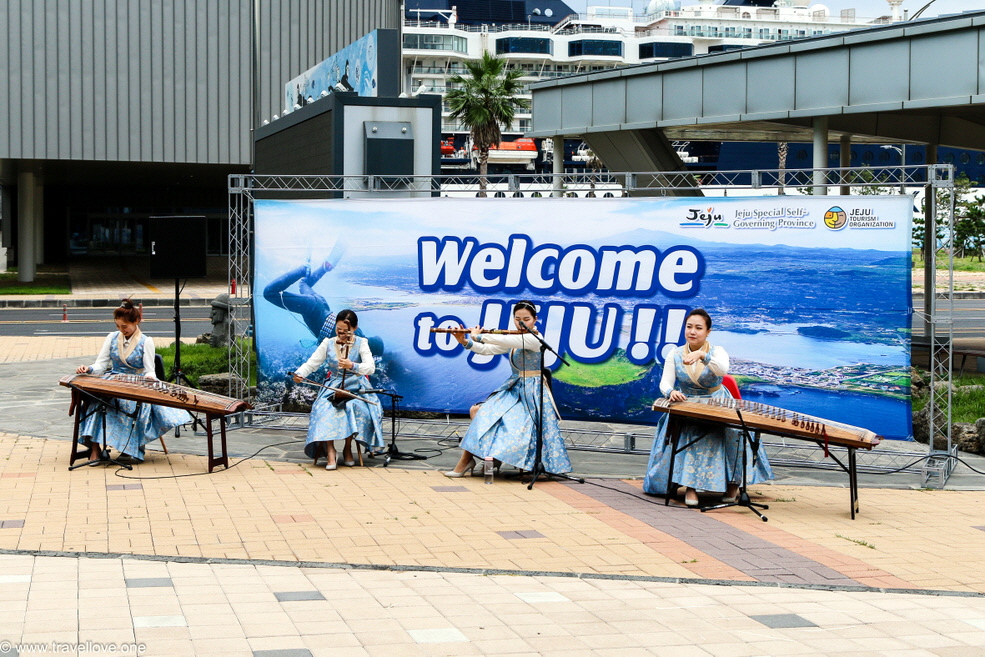
In the small but comfortable minivan, we drove inland and after some 45 minutes reached our first destination, Jeju Stone Park.
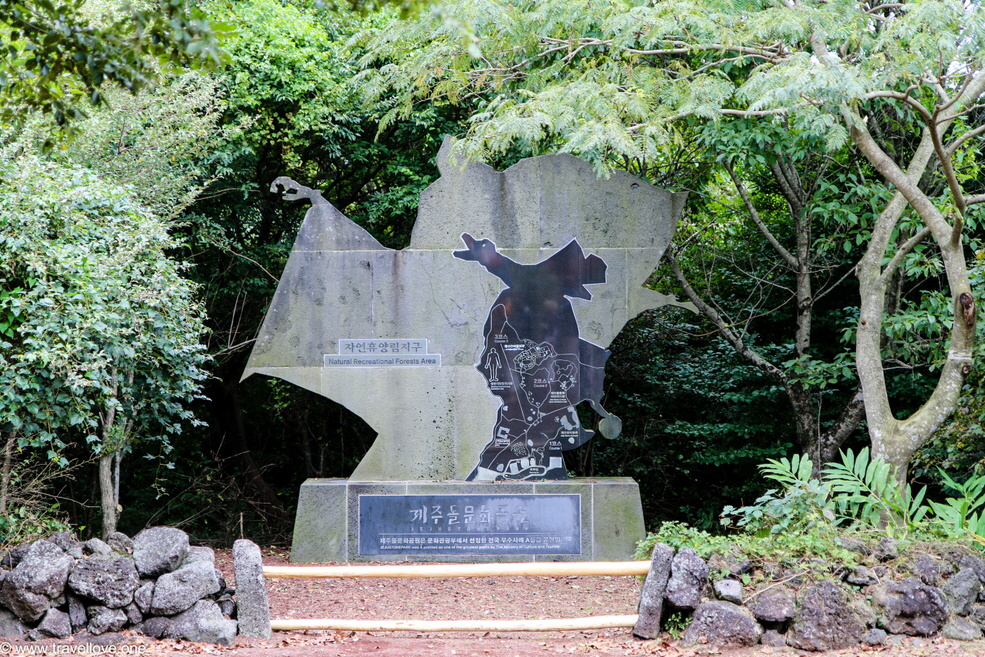
The stone park was inspired by Jeju’s mystical stones. The main theme of the park revolves around the legend of Seolmundae Halmang (Grandmother Seolmundae), who is said to have created Jejudo (the Korean name for Jeju Island) and the stones of Obaek Janggun (the Five Hundred Generals).
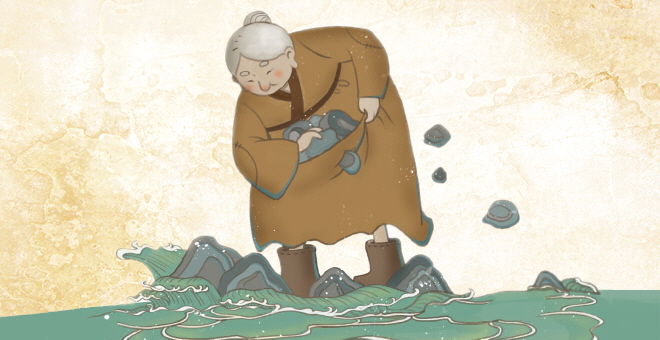
Image courtesy Jeju Tourism Organization
According to legend, the grandmother shoveled seven huge piles of soil and created Mount Halla. The volcano, also called Hallasan, is located on Jeju Island and is the highest moutain in Korea. While shoveling, clods of earth fell through the holes of her dress, which is how the more than 360 different subcraters (Oreum) are said to have formed.
The entrance to the park was guarded by a Dol Hareubang, a statue from lava stone that can be found everywhere on Jejudo. Dol Hareubangs (grandfather made of stone) are considered gods and are said to bring protection and fertility.
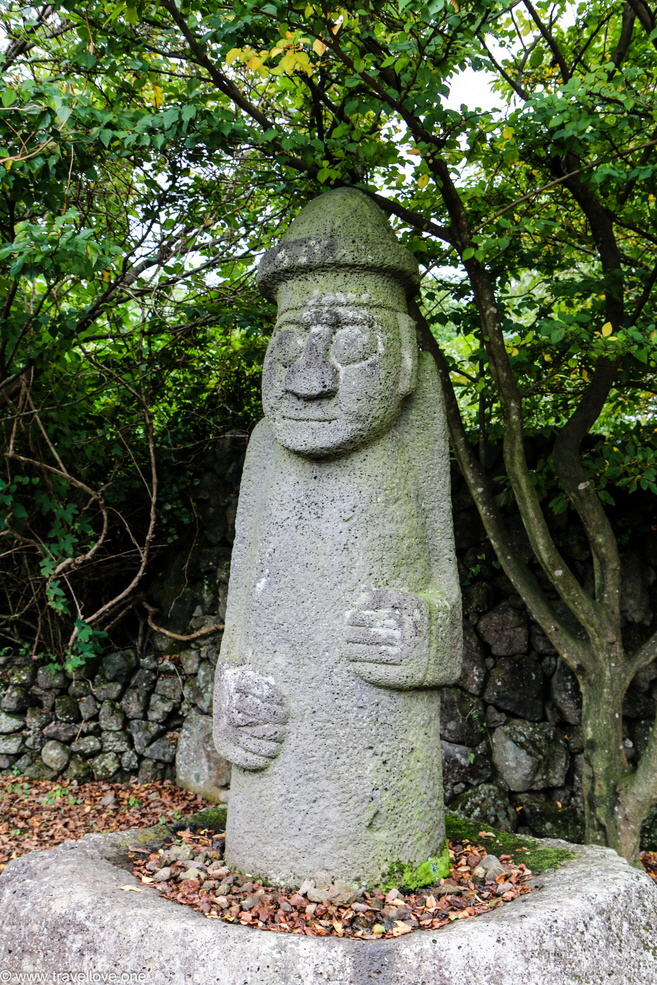
We continued on the „Path of Legends“. Everything here revolves around stones – each legend refers to a stone and every stone has a legend.
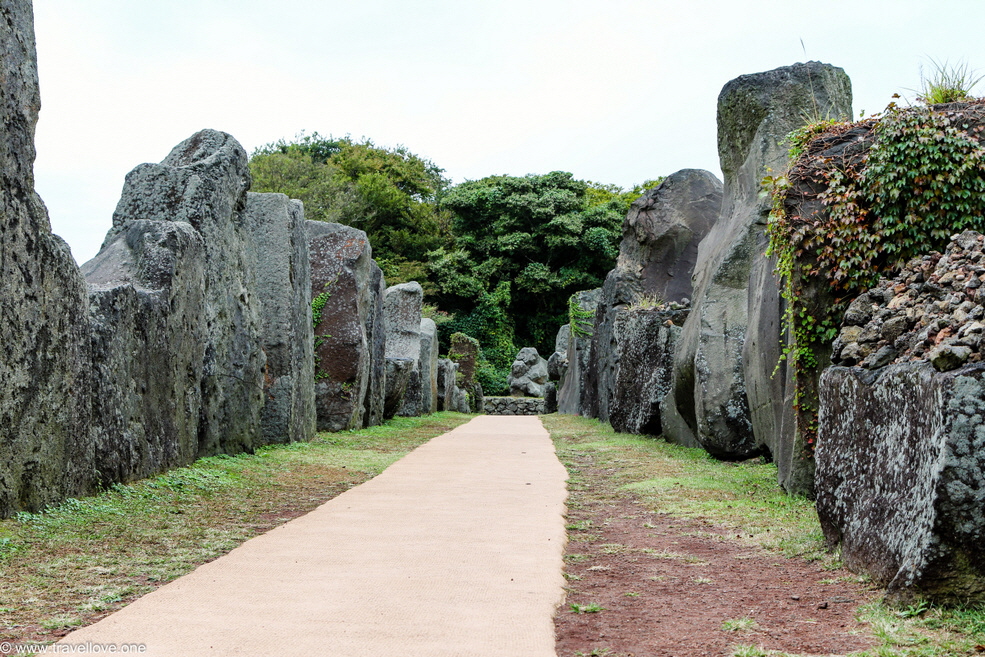
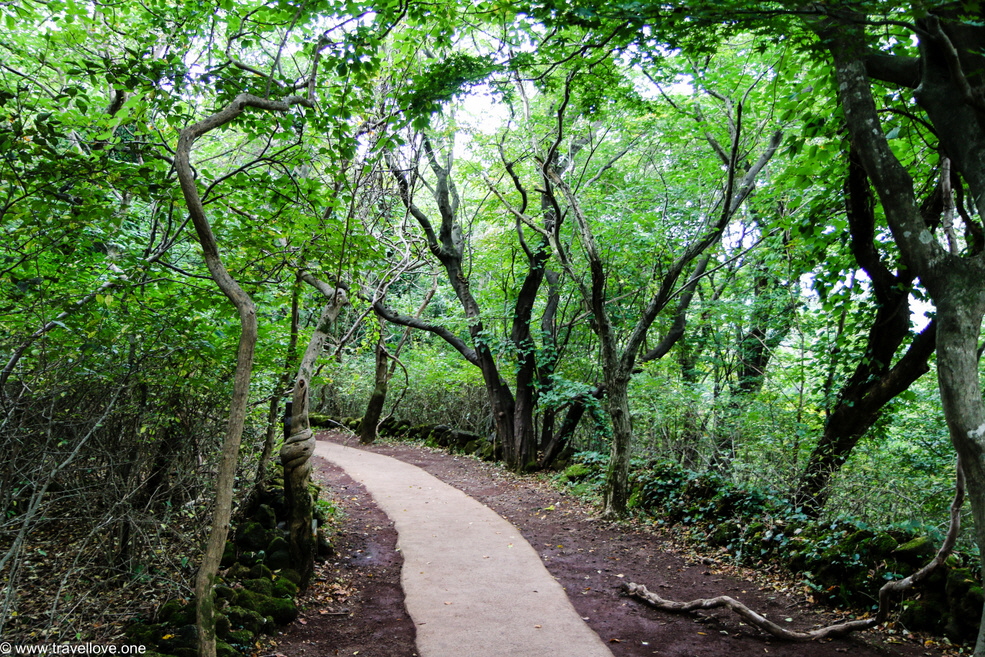
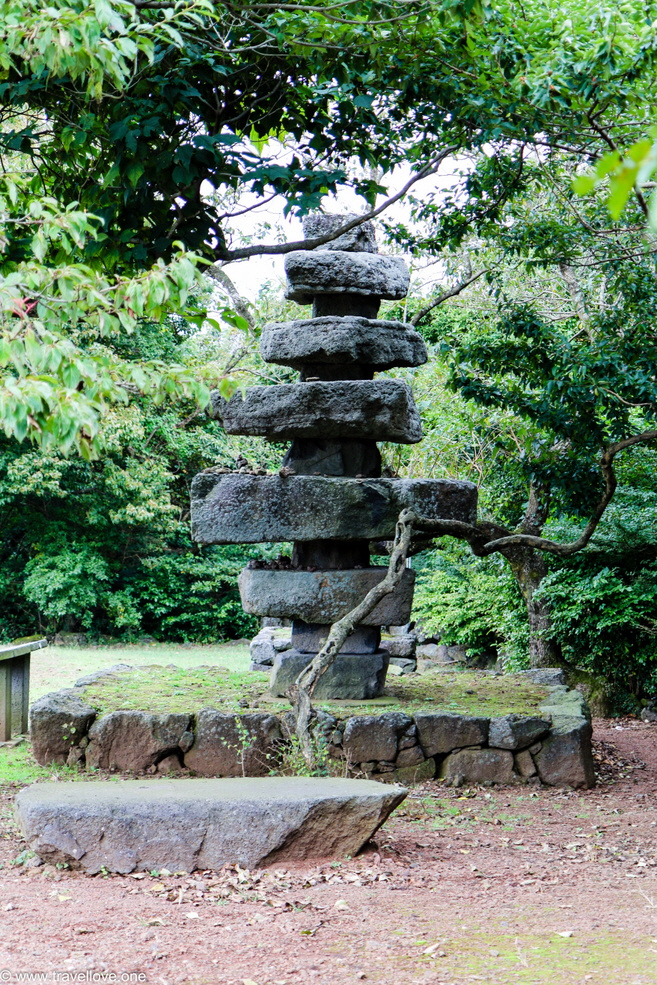
These were the „symbolic towers of Seolmundae Halmang and the Obaek Jang-goon“.
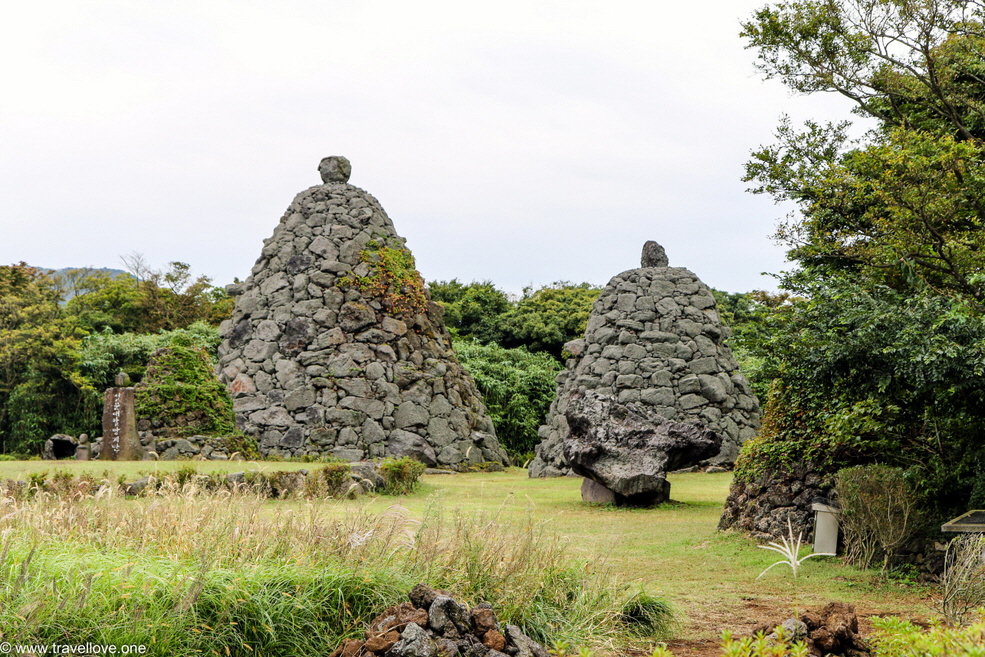
By the way, the Obaek Jang-goon (the Five Hundred Generals) are the 500 children of grandmother Seolmundae. They eventually turned to stone, but that’s told in another legend.
The path took us to a stone museum, where we got a lot of information on the creation of Jeju, volcanic activity and the history of the island.
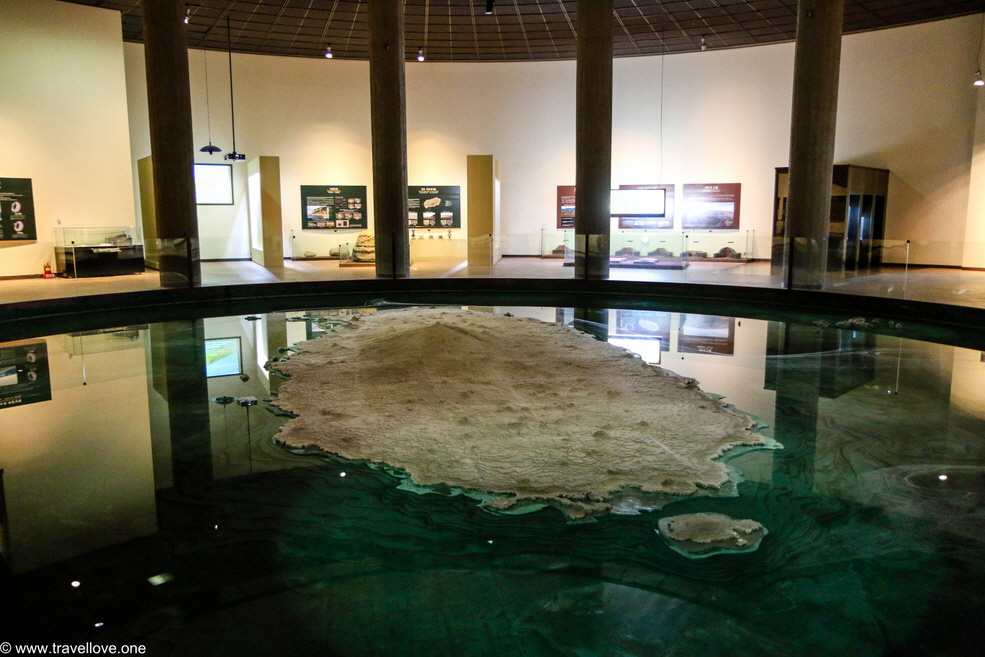
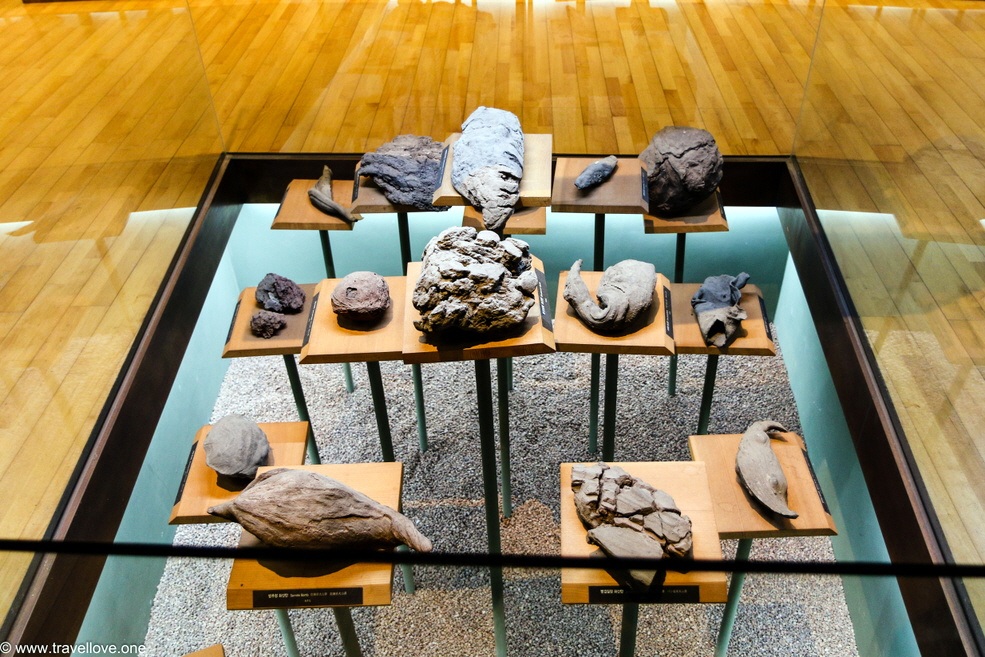
It wouldn’t have been complete without a large display of stones. They were exhibited in many forms and sizes.
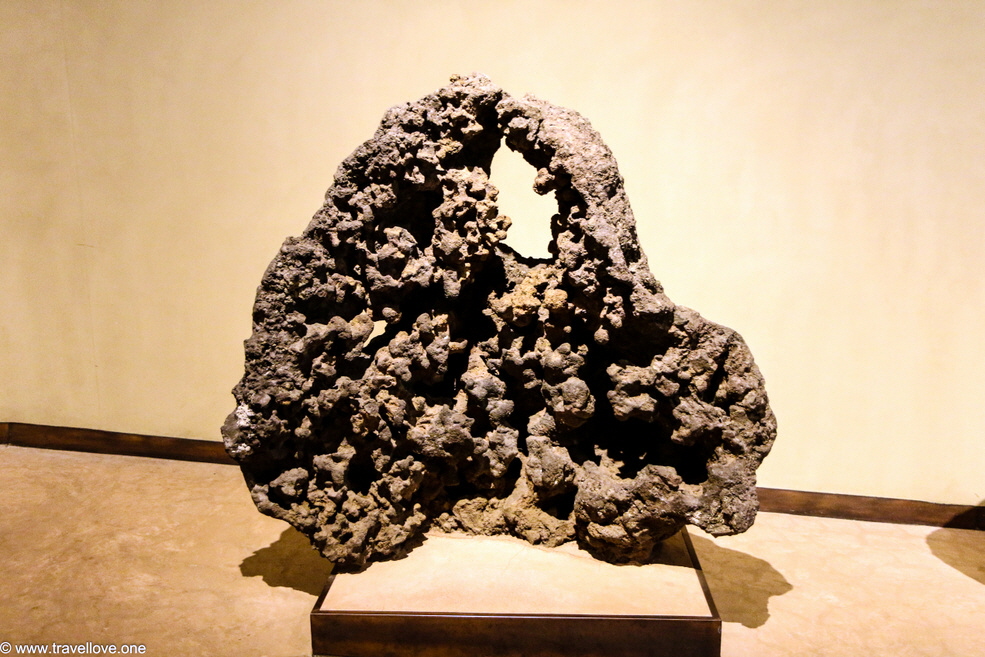
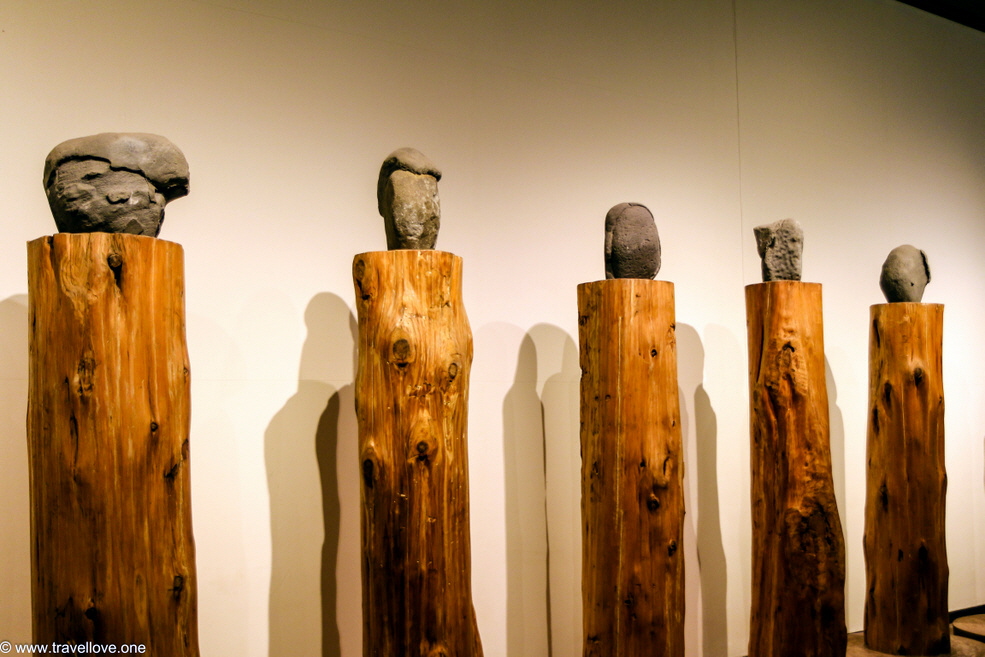
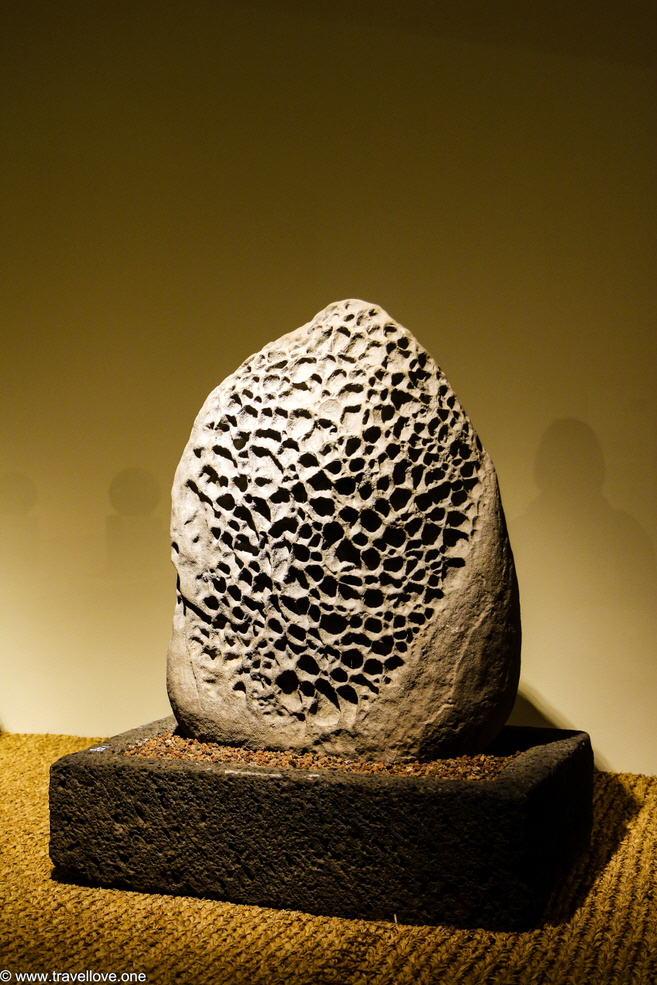
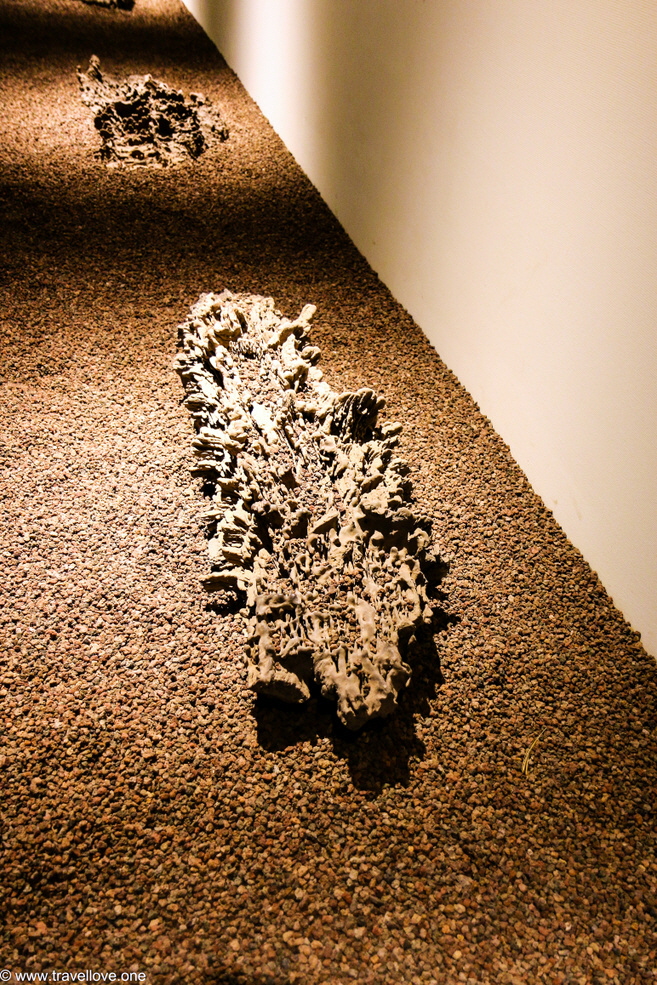
Chunks of lava which could be interpreted as shapes of figures were obviously objects of more legends.
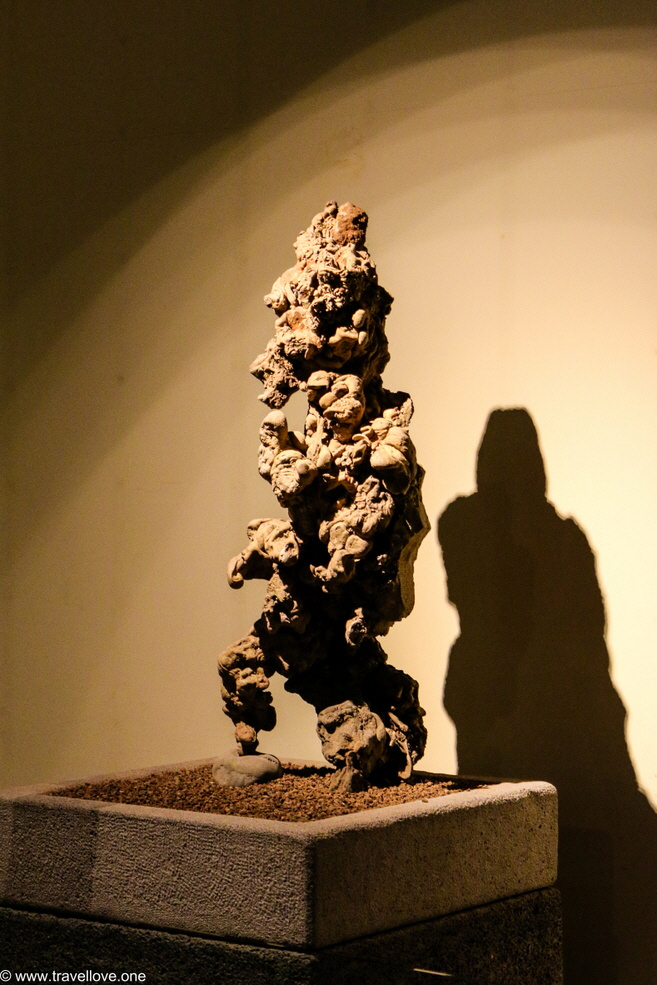
Large lava balls, partly hollow inside, were also interesting. They were formed by lumps of lava rolling down the mountain as they cooled.
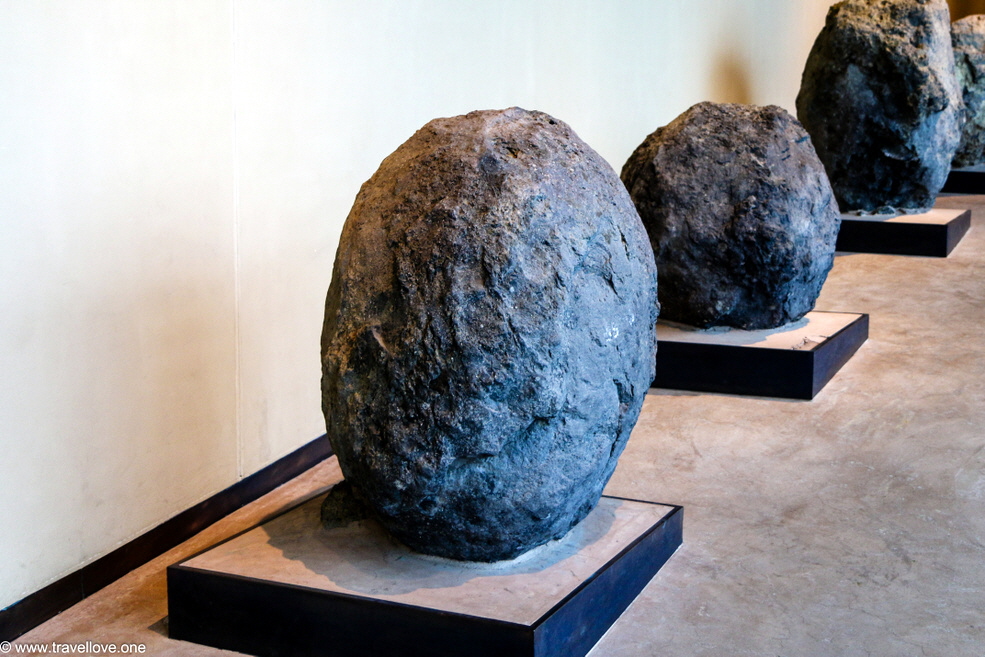
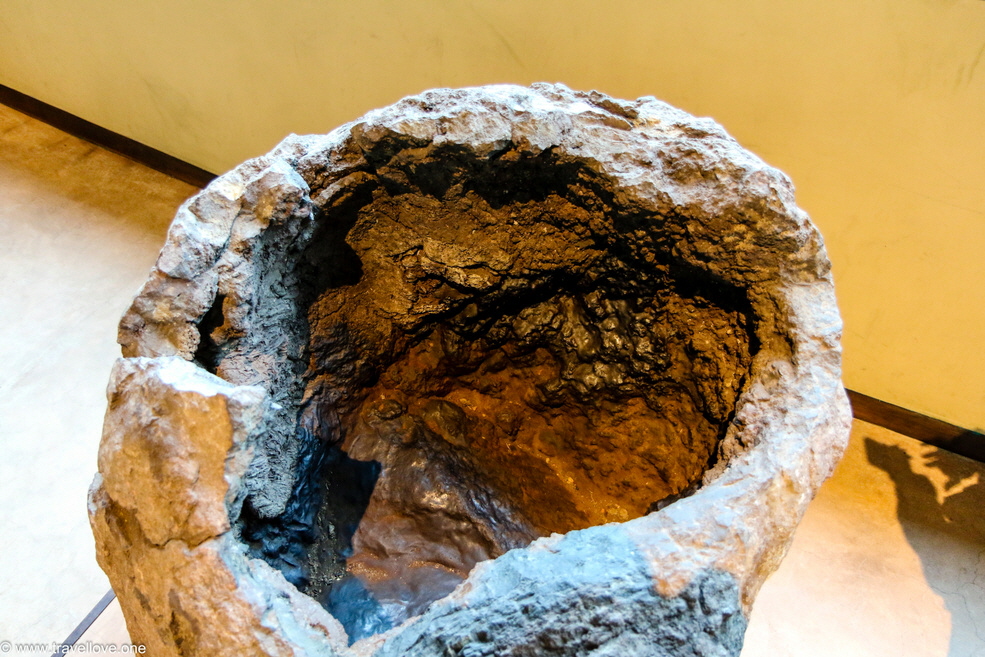
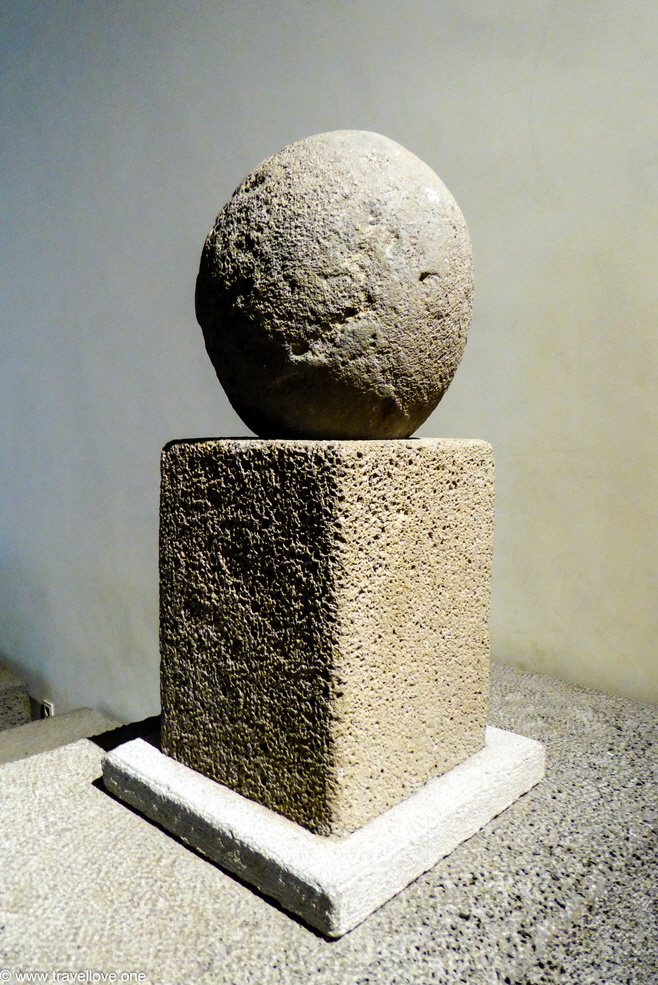
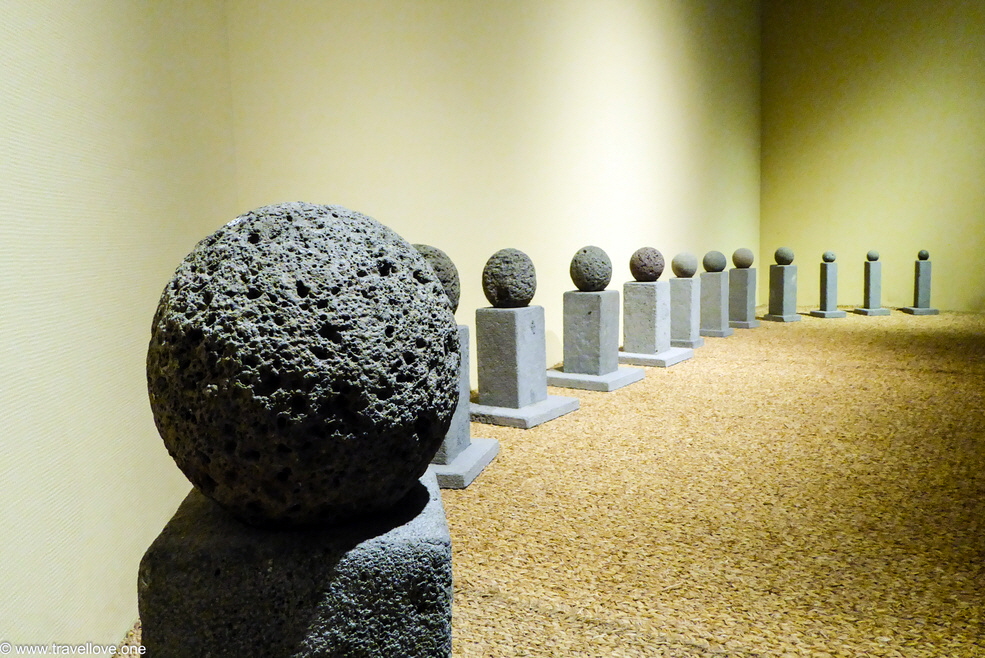
In another part of the park they had collections of old tools and bowls of basalt.
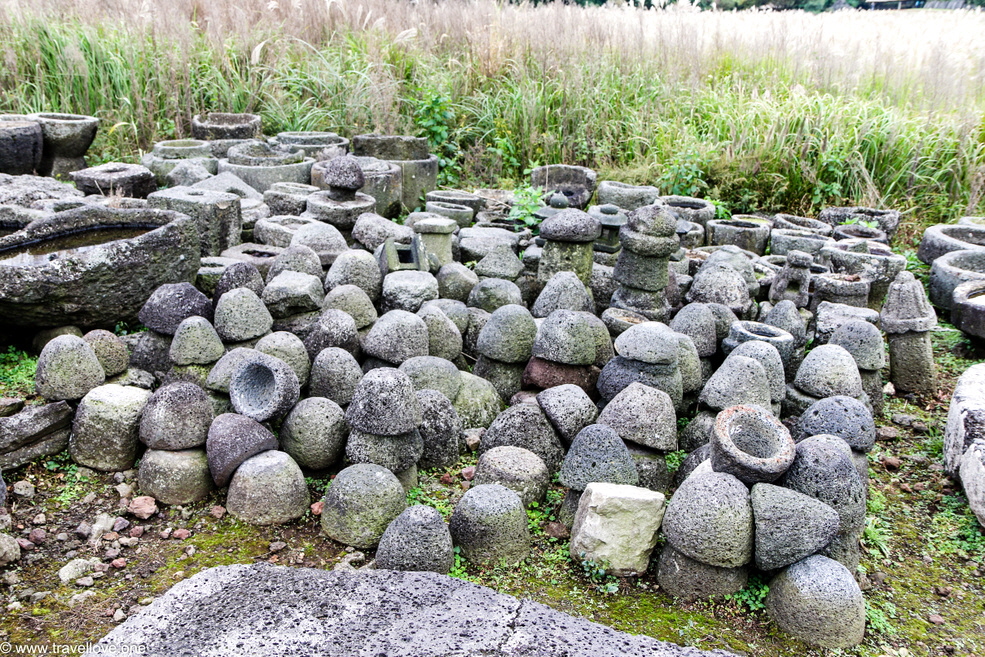
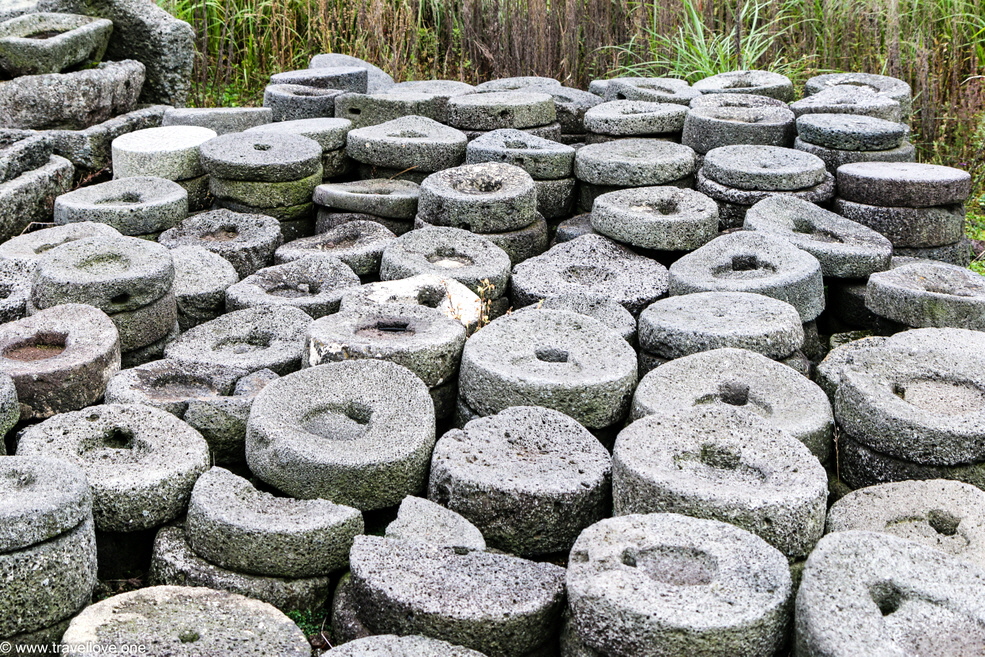
More grandfathers of stone were lined up guarding not only the tools but also a burial mound.
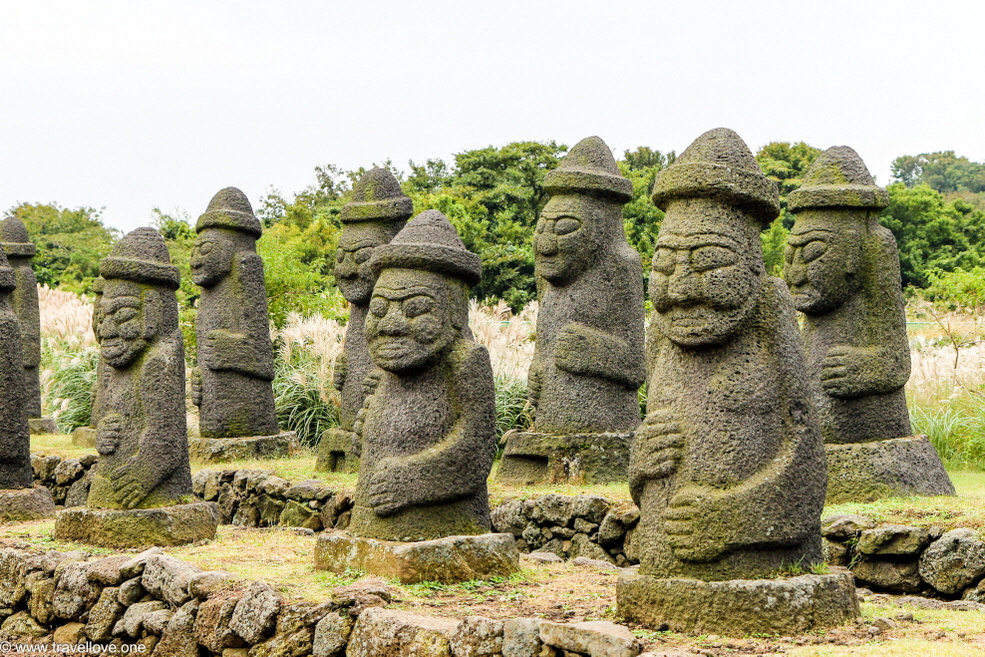
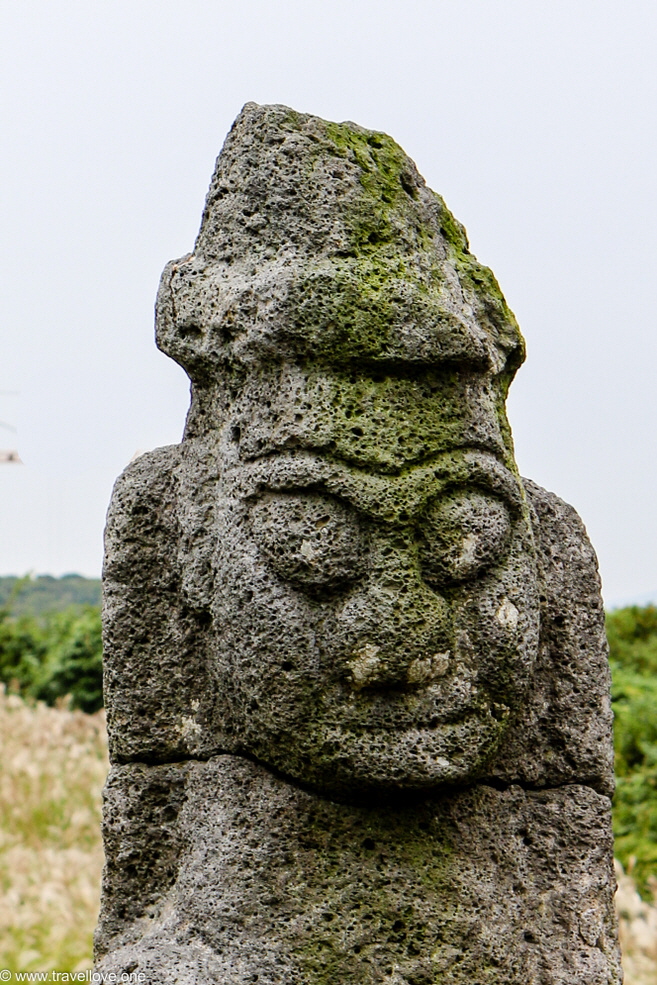
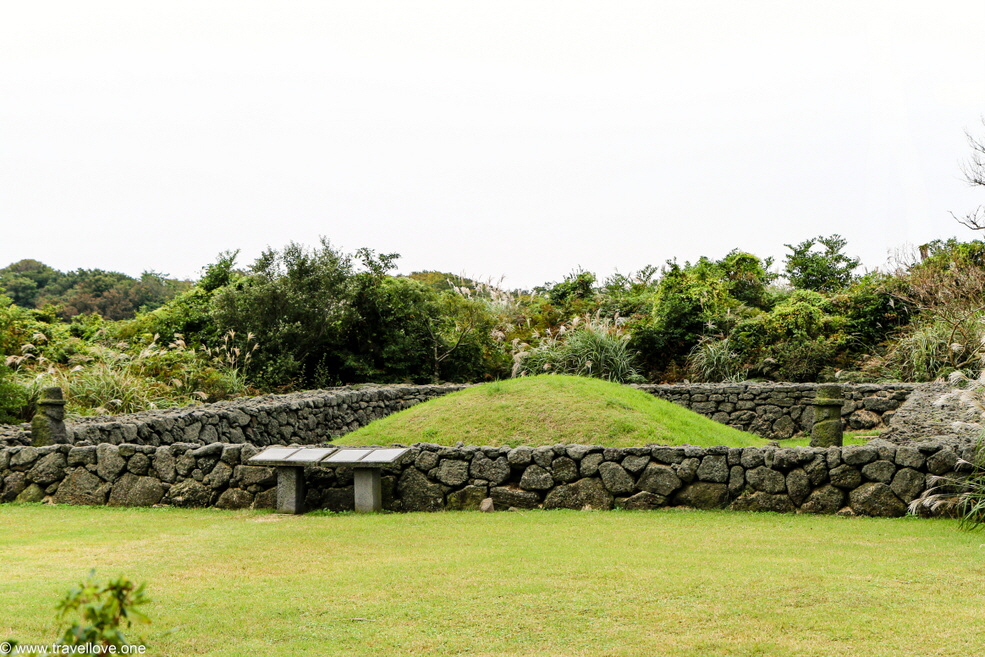
Donjaseok children statues, placed at graves to soothe the souls, watched us as we went along.
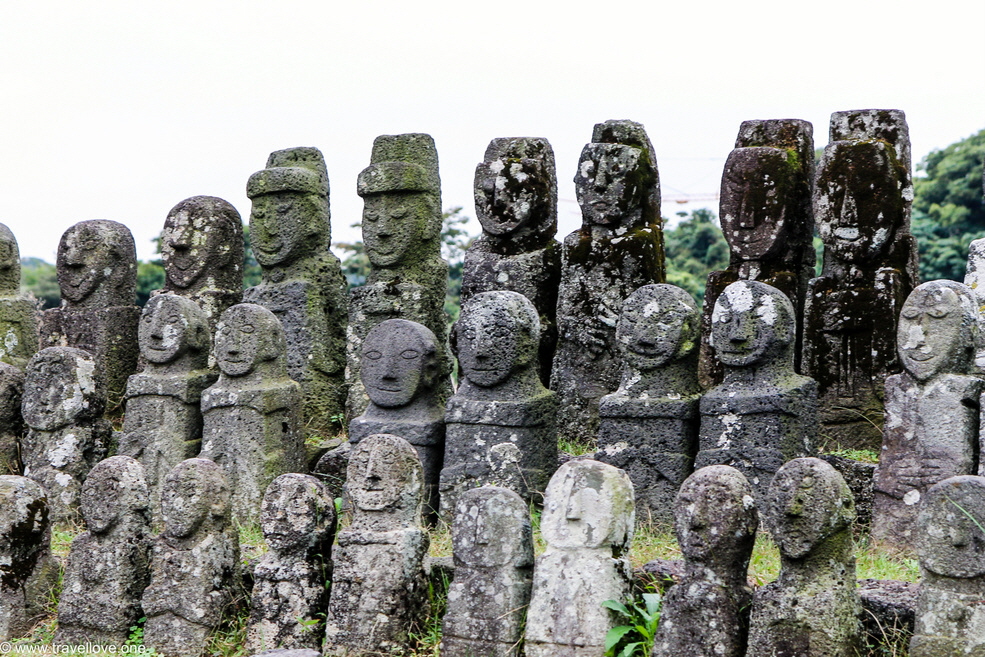
Past the petrified faces, our guide took us to a replica of a traditional thatched house of clay and stones. According to historians, such houses were built on Jeju as far back as 6,000 years ago.
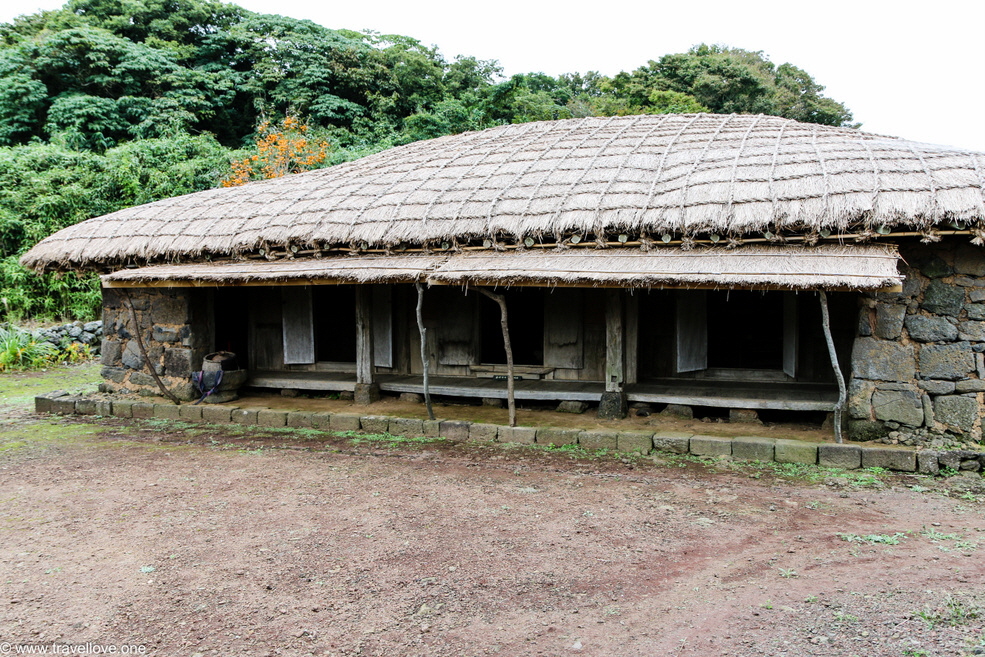
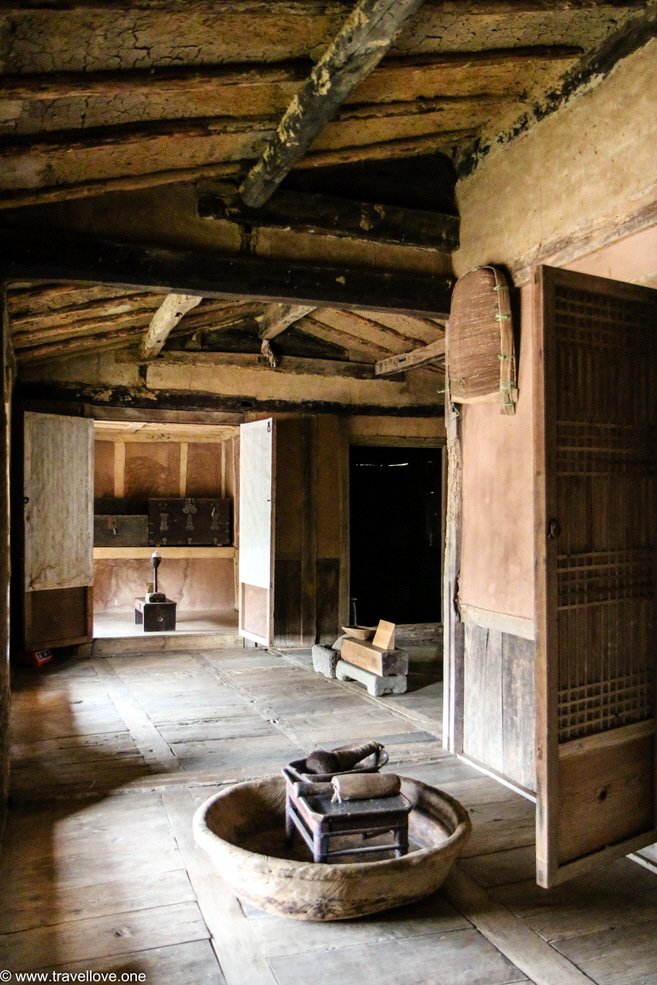
Then she said „Now we are going to Mother“ and took us to a stone cave called “Mother’s Room”.
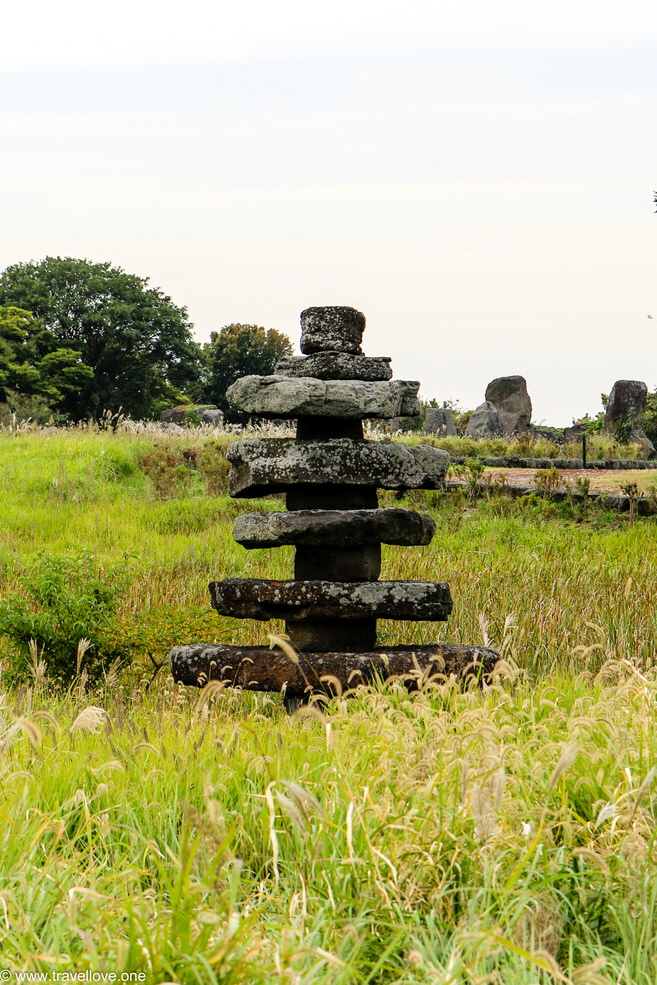
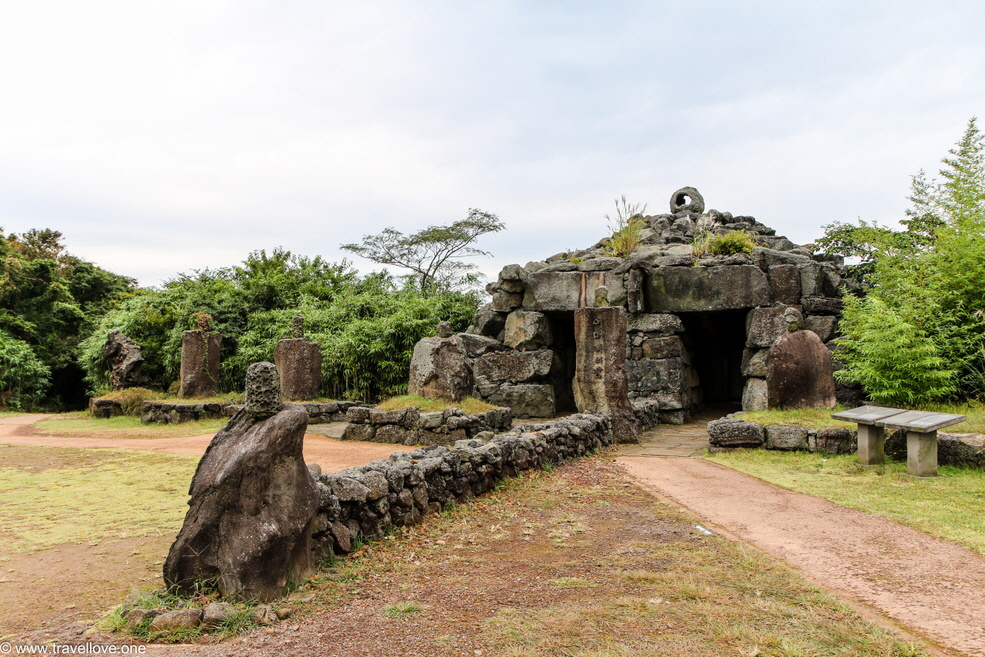
Inside, we found the fossilized mother and her son…
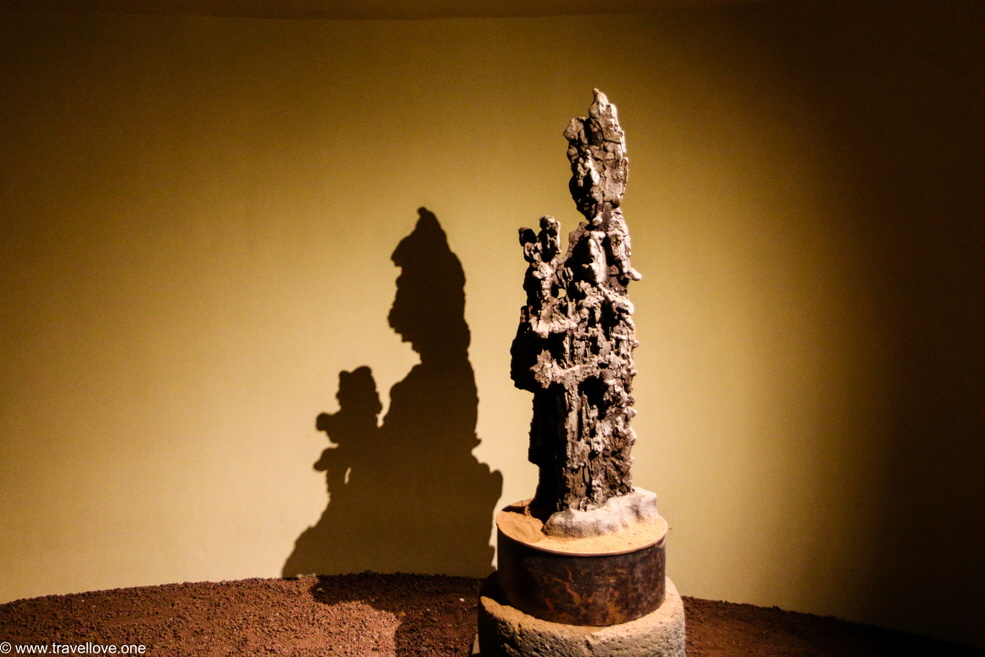
After our visit to the stone park, we were to continue volcanically. Our journey continued to the San-Gumburi crater. With a diameter of 650m (2,133 ft.) and a depth of 130 m (426 ft.) it is the second largest crater on the island.
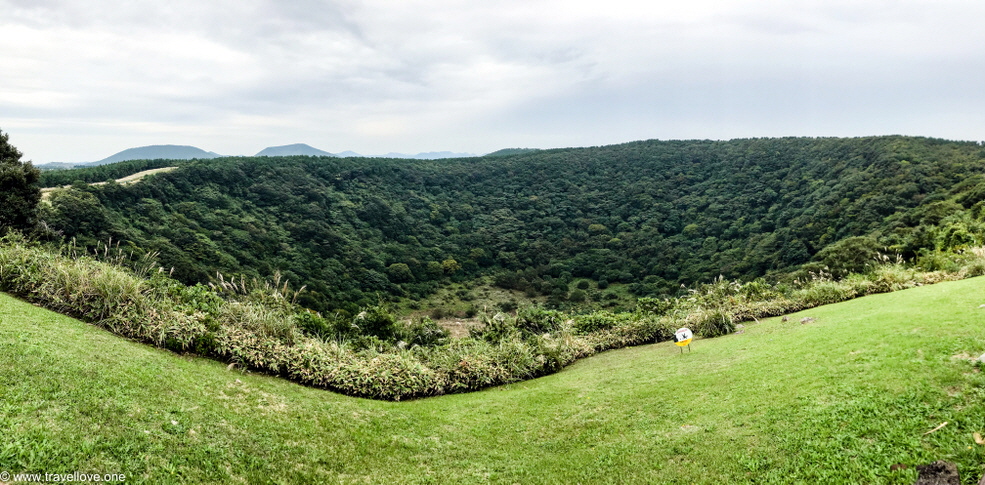
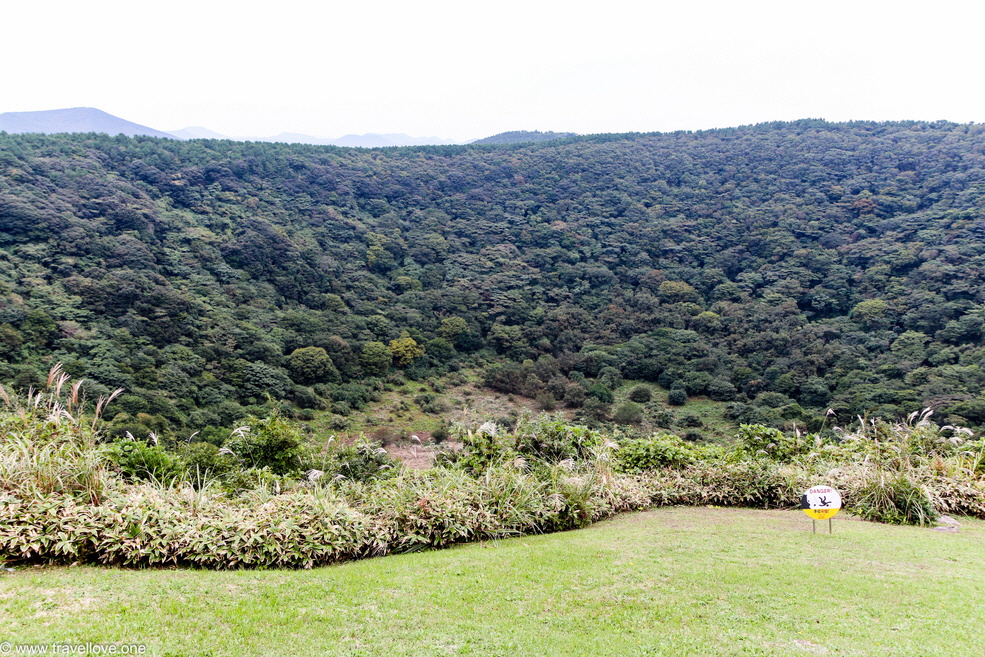
The crater and the surrounding parks are also a popular destination of the islanders. Especially at this time of year, when a sea of pampas grass heralds the arrival of autumn. Apparently, this is the Korean equivalent to our Indian Summer. Many visitors walked around the grounds enjoying the sight, and even a the local news station had sent a team for a live broadcast.
The endless planes were moving in the wind and actually created the impression of waves of the sea. It was beautiful to look at, and we could see why it attracted so many visitors.
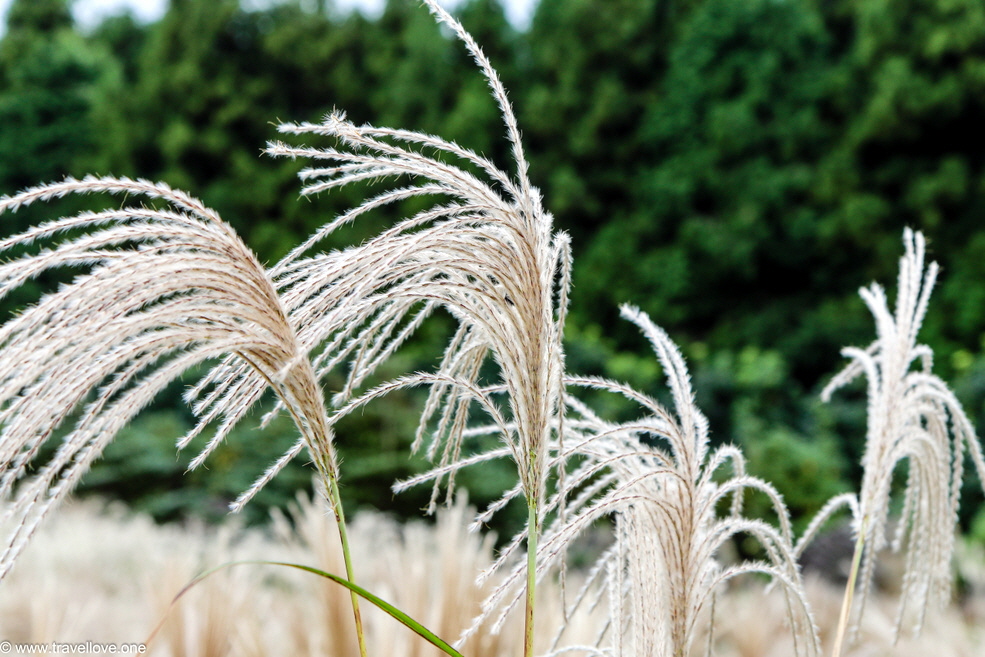
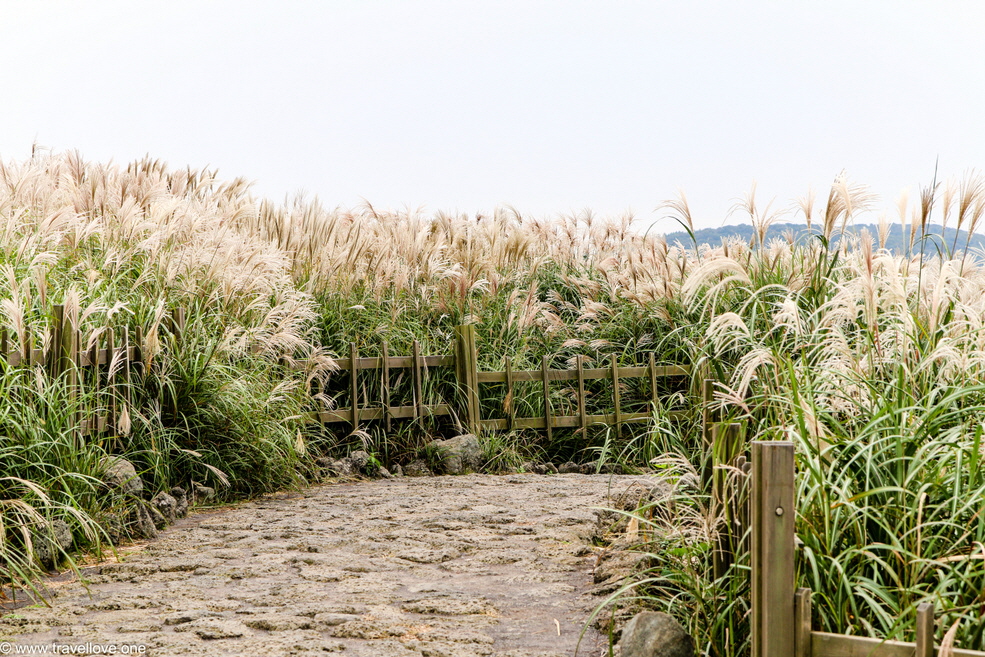
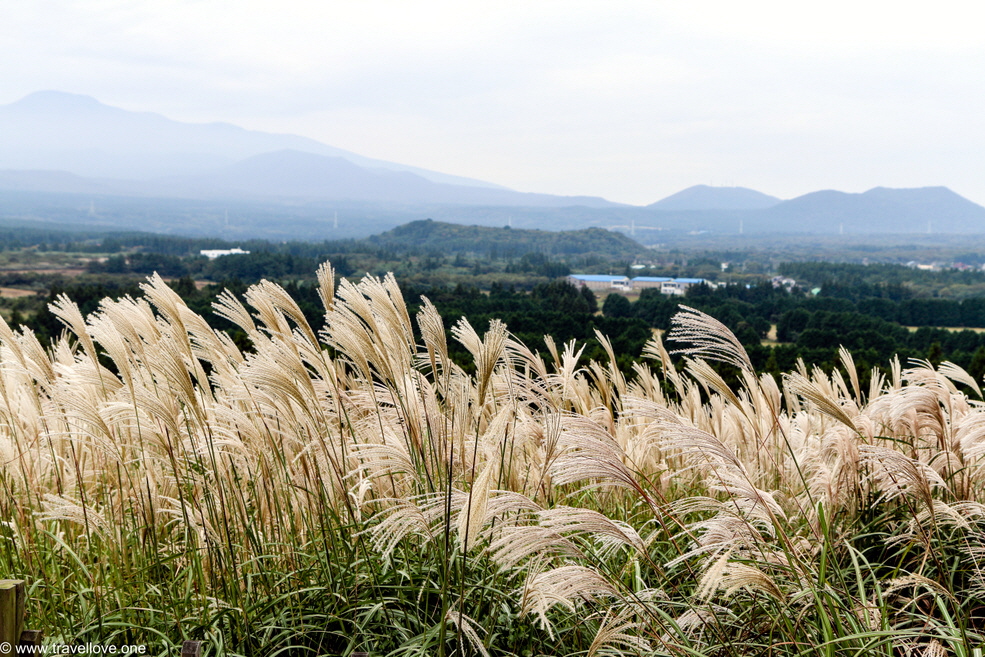
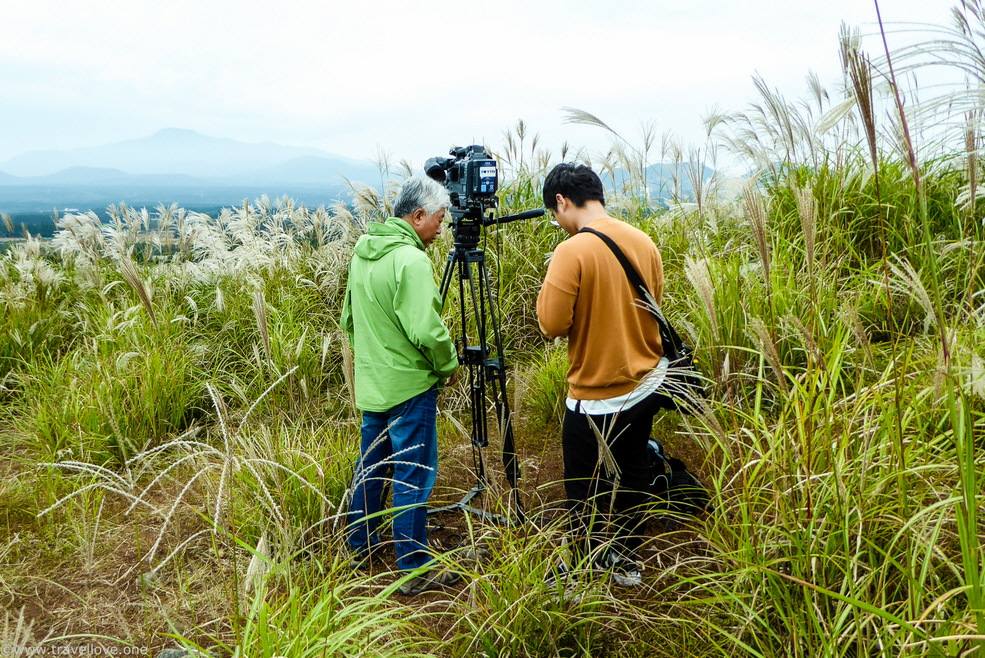
At the end of a path we reached a viewing platform with views in all directions. Hallasan mountain, many of the other other volcanic cones and the sea were all easily visible from here despite the somewhat sulky weather. Our guide explained that because of the similarities, Jeju is also referred to as the Hawaii of South Korea. Would the rainy weather be part of those similarities?
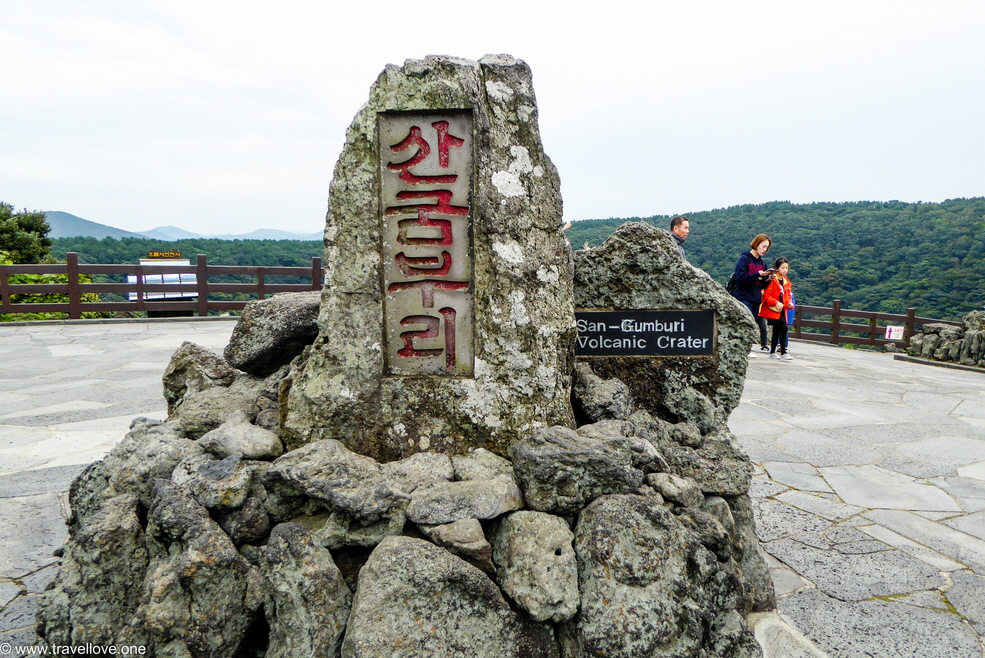
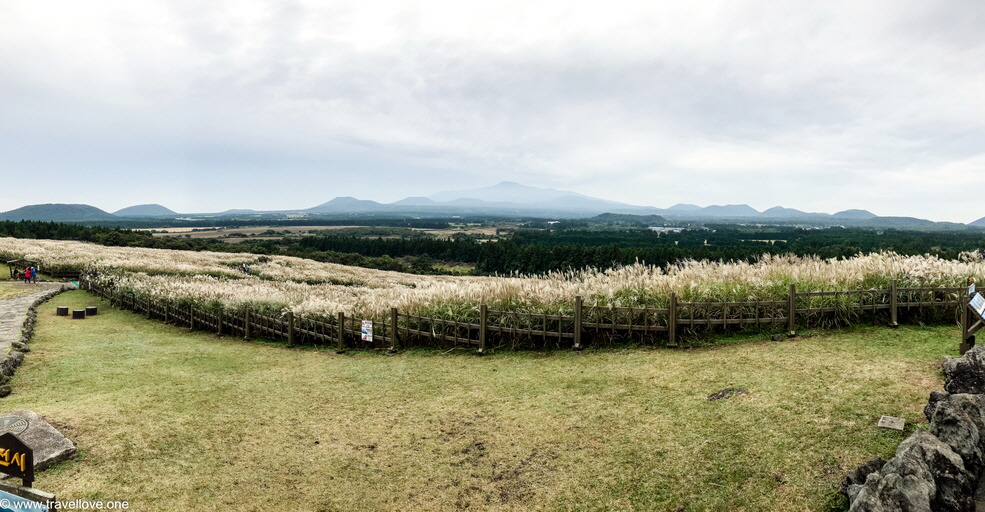
No place without some kind person to take a group photo…
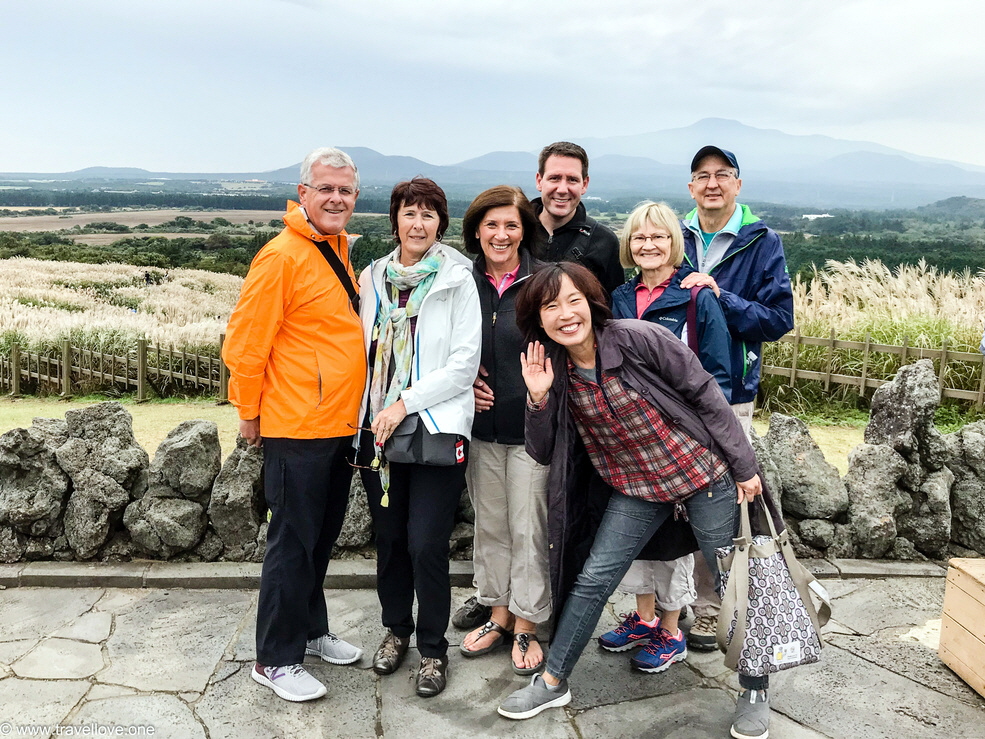
On the other side of the lookout we went back through the park and returned to the entrance.
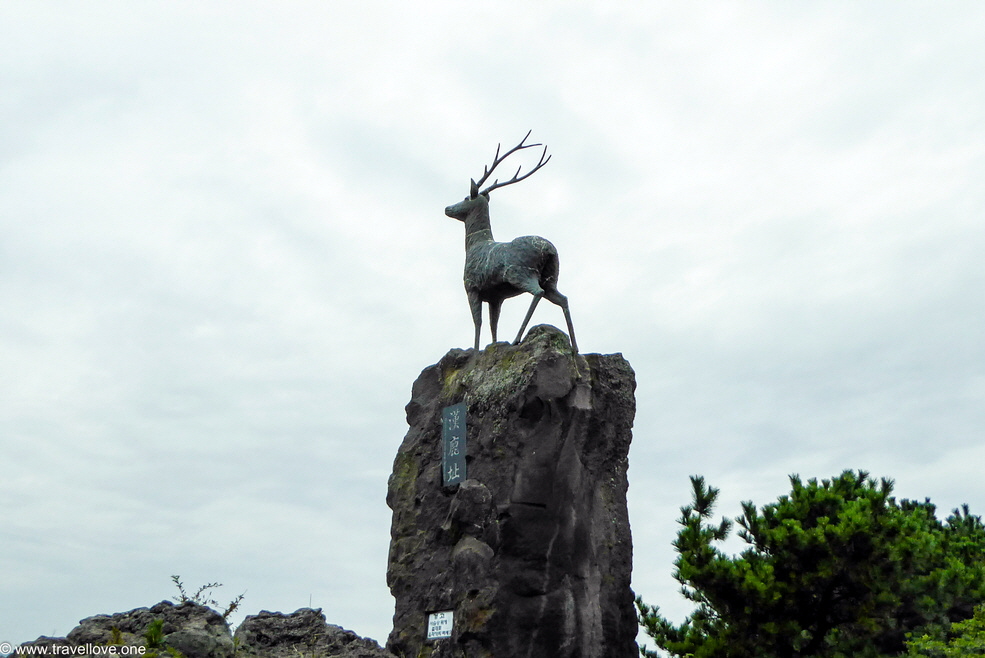
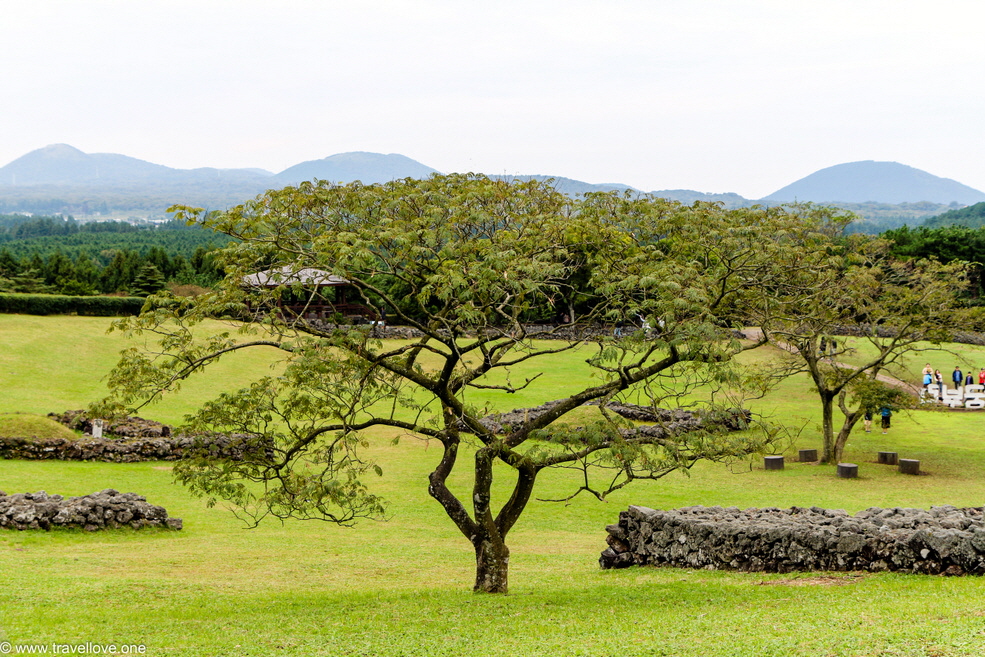
Back there, some of us followed the urgent directions of a sign...
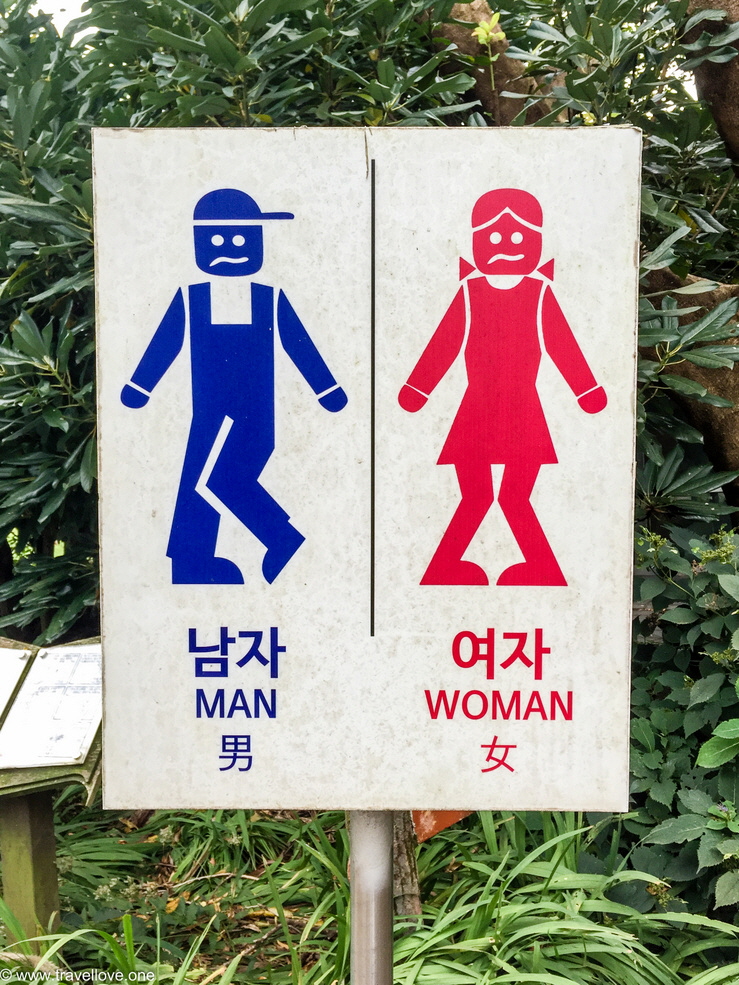
Shortly before our next destination, Seongsan Ilchulbong crater, we made a quick stop at the coast to take in its full size.
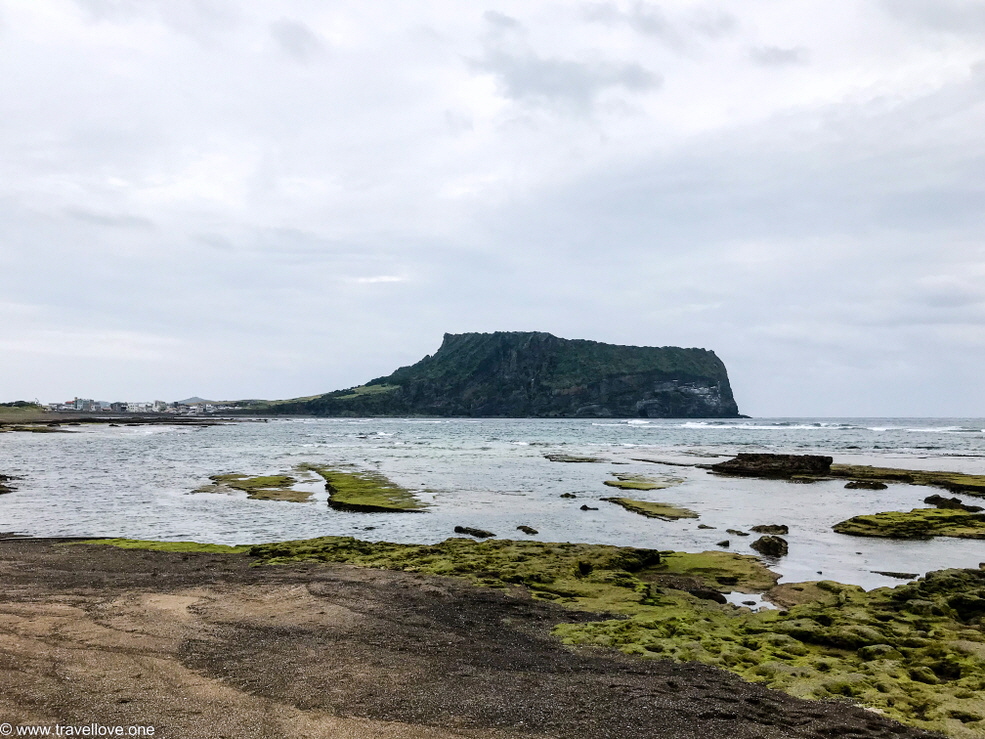
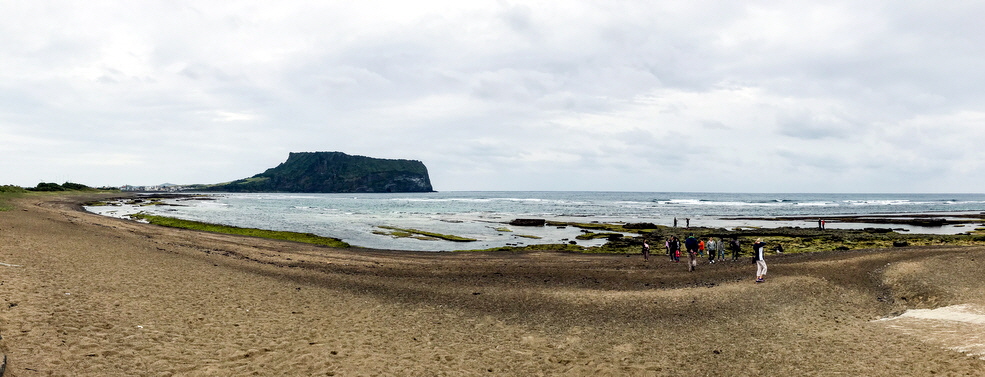
A few minutes later we found ourselves amidst the many shops and restaurants below the crater.
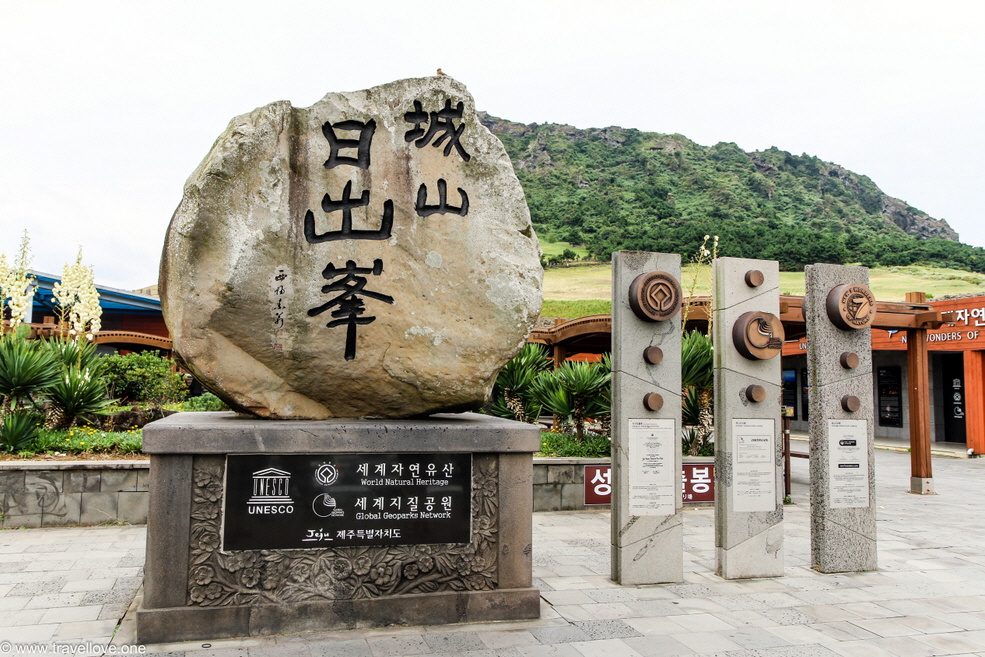
While our fellow travelers rather stayed „on the safe side“ and had lunch at one of the western cafés like Starbucks and Dunkin Donuts, we followed the advice of our guide and tried some local specialty.
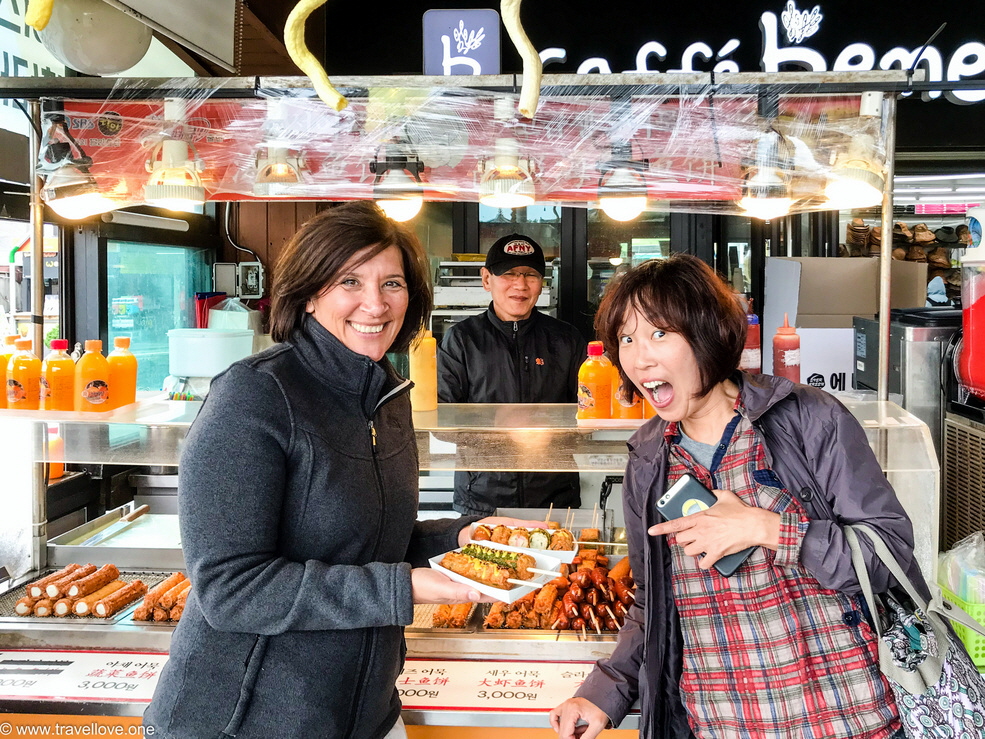
The crater, also known as Sunrise Peak, showed us little sun today. But its wild and rugged walls in combination with the strong coastal wind that had developed in the meantime had a somehow raw beauty.
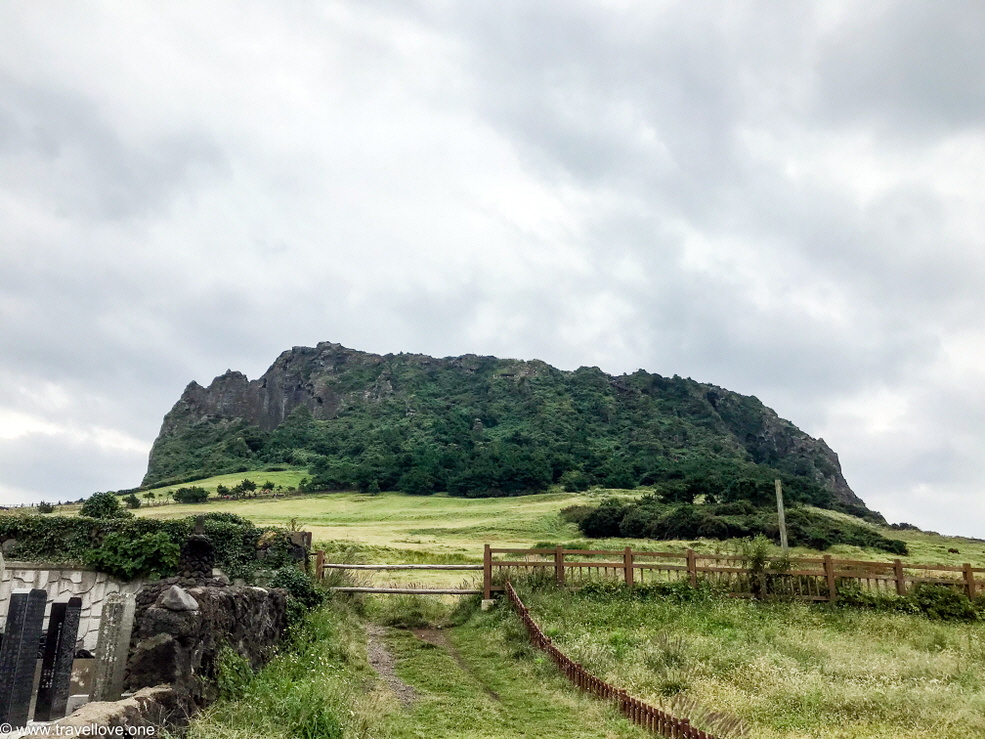
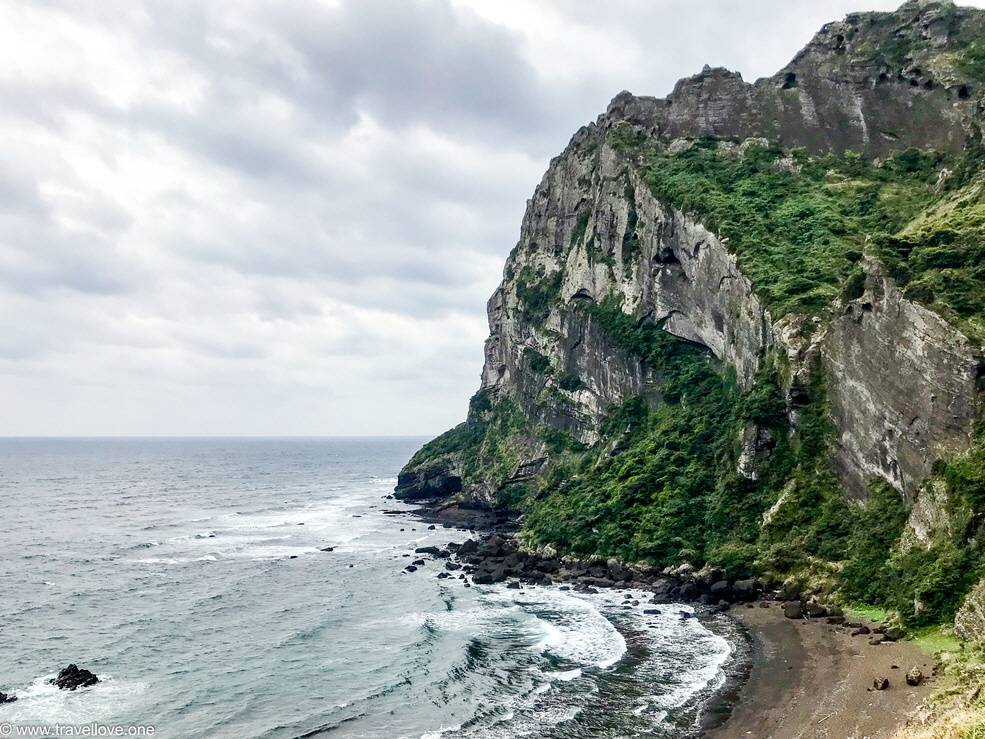
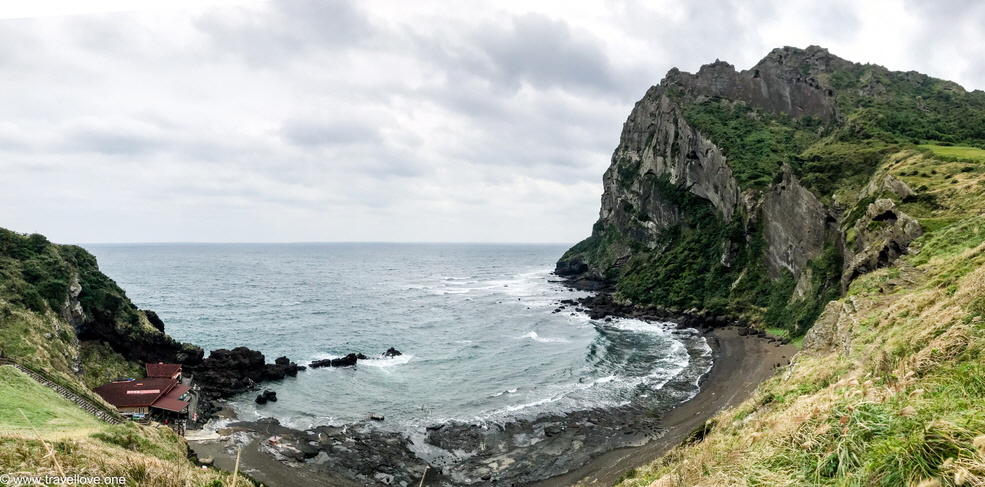
There was a path and many steps via which you could walk up to the crater’s edge. But we left this to determined hikers who we could make out as small dots on the mountainside. Maybe that was something to keep in mind for our next visit.
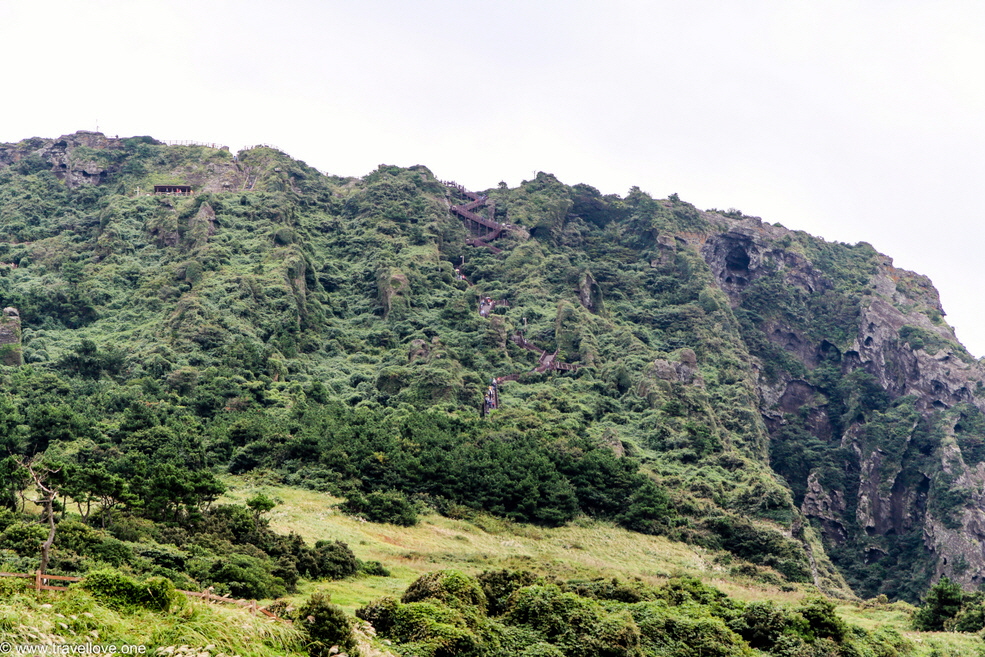
Surely, the view of the crater from the top would have been impressive. This is a shot from a board.
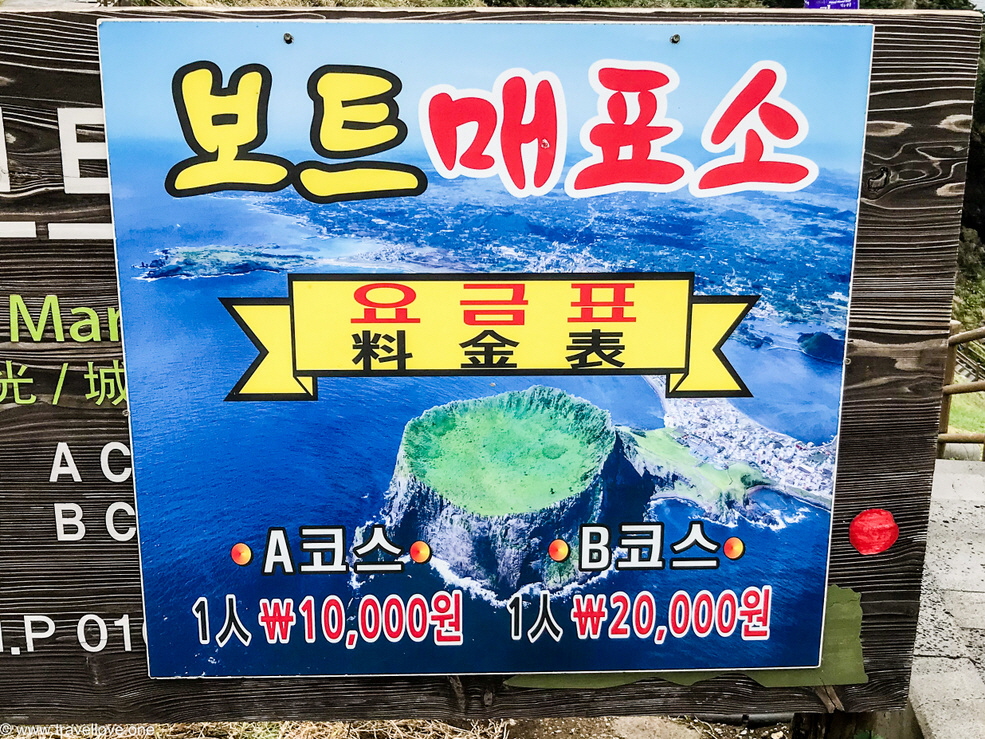
In the bay a little below our viewpoint there was a diving station of the famous Haenyo (“sea women”) or Lady Divers. They are considered living landmarks of the island.
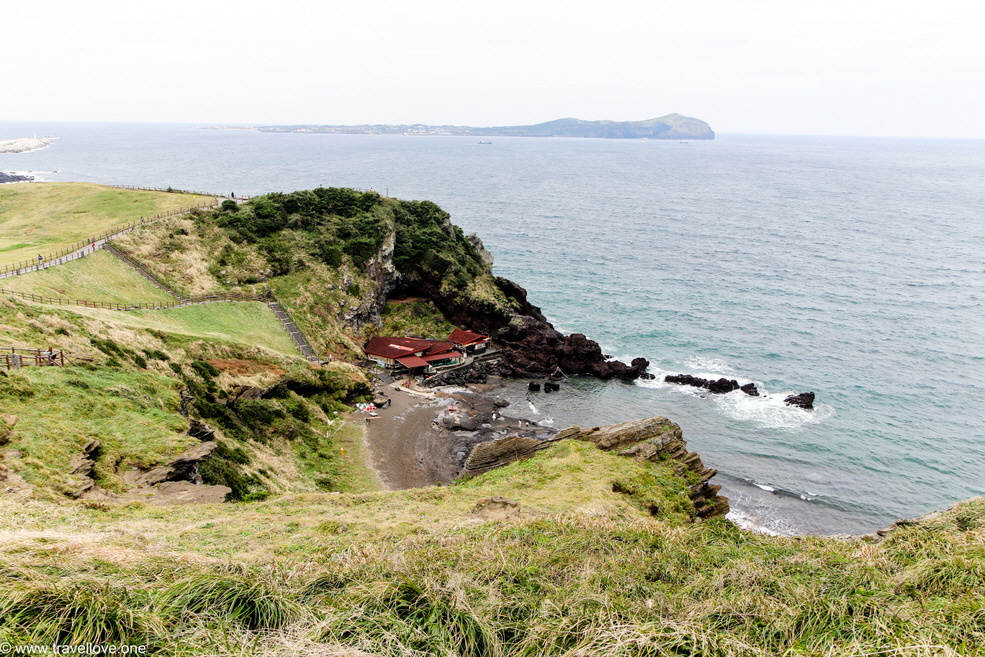
Through hard training and physical adjustment they can stay underwater for several minutes while harvesting seafood, diving up to 20 meters (65.5 ft.) deep. Since the Haenyo hardly have successors, there are only few of them left. Some of the die-hard divers are already 80 years old.
They show guests their traditional work in the bay. But due to the bad weather an the high waves, we weren’t able to admire them that day.
On our way back to the car we took a look at the small but colorful Buddhist temple Dongamsa at the entrance.
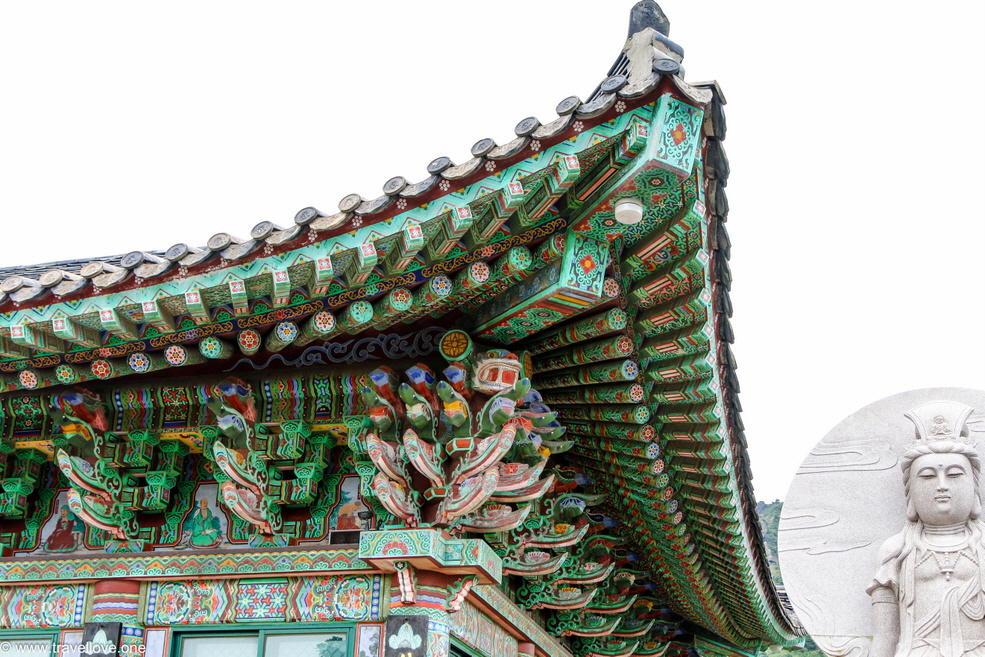
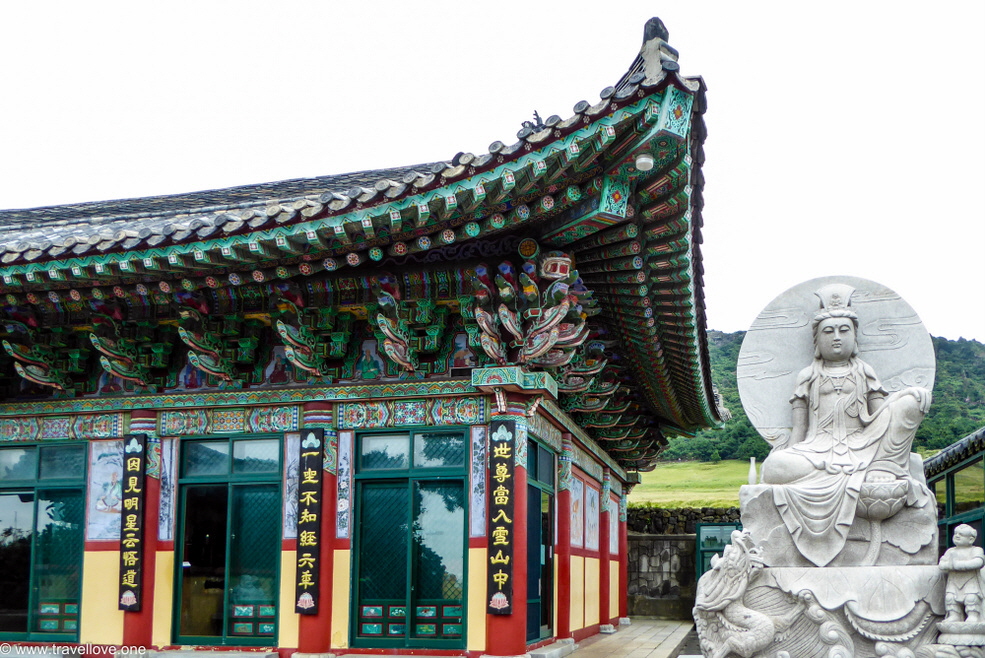
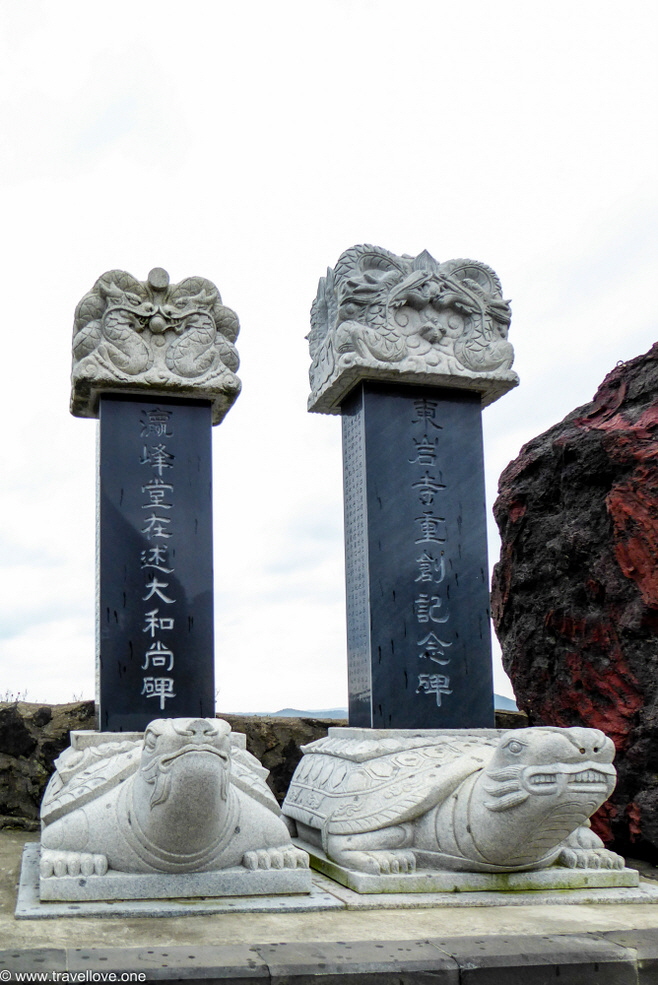
We continued our tour and passed many beach cafés and squid hung up to dry.
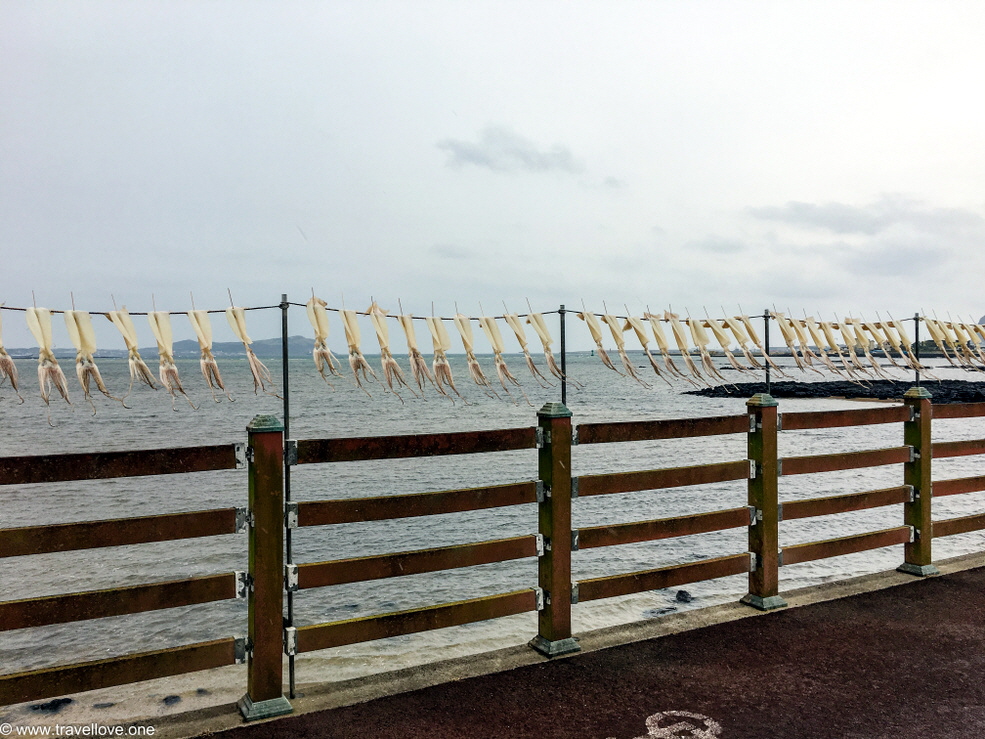
Our guide offered to visit a Lady Diver museum or walk through large lava tubes. But somehow being back in the warm, cozy car after the cold and rough wind outside had made us all tired. So we just enjoyed the drive back to the ship.
Back on the ship we unpacked the souvenir we had bought at the crater: a little Dol Hareubang, who is now watching over us in our living room, reminding us of our day on Jejudo.
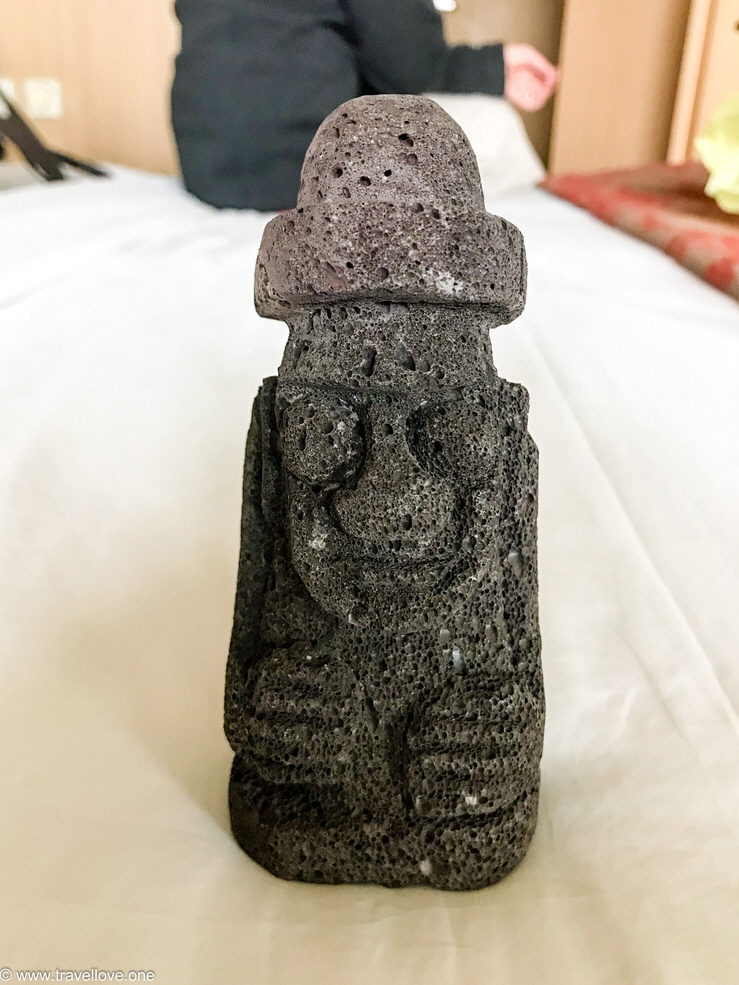
www.travellove.one • www.thecruise.report • www.travelandcruise.net
© 2021 Die Rechte an Texten, Fotos und Videos liegen beim Autor der Webseite. Die Nutzung ist nur nach ausdrücklicher Freigabe erlaubt.
